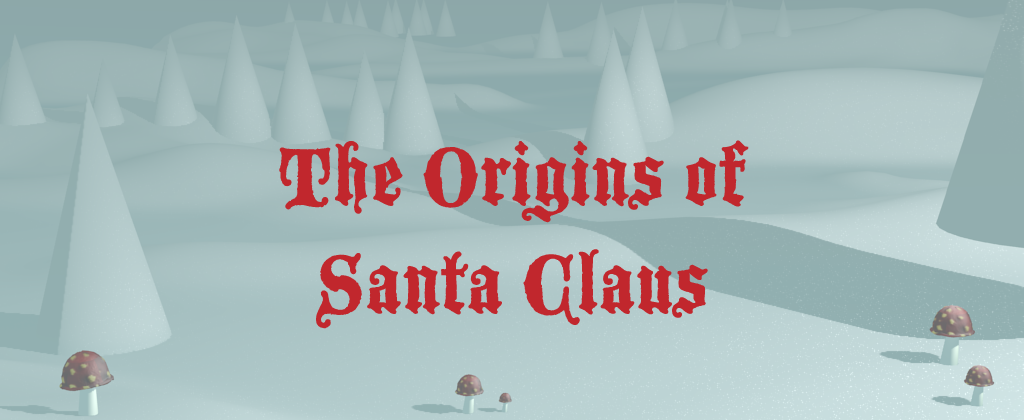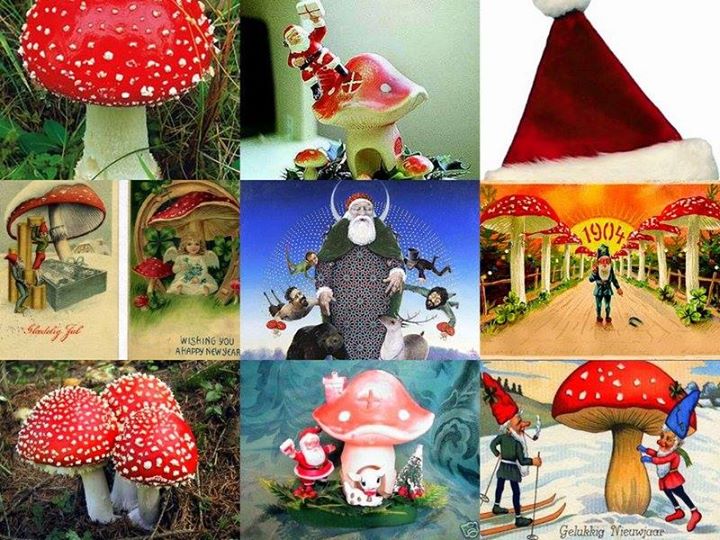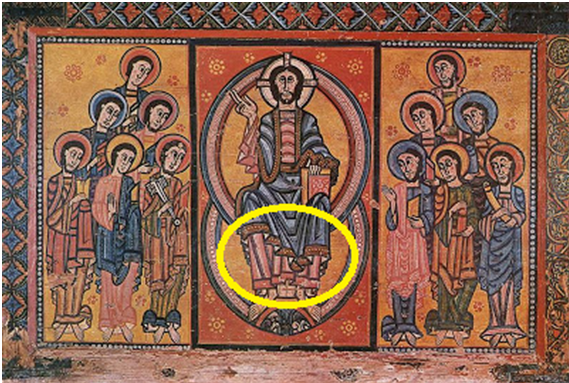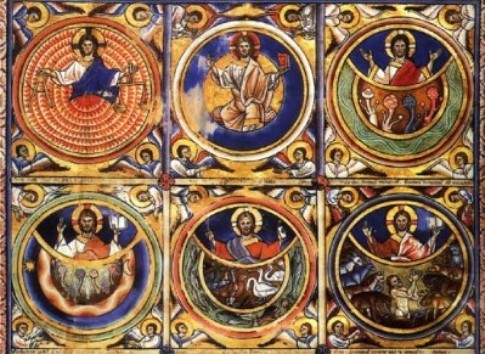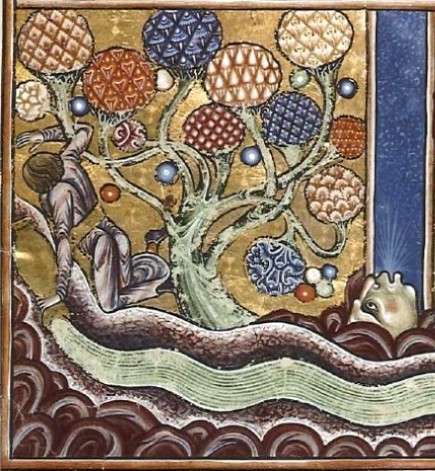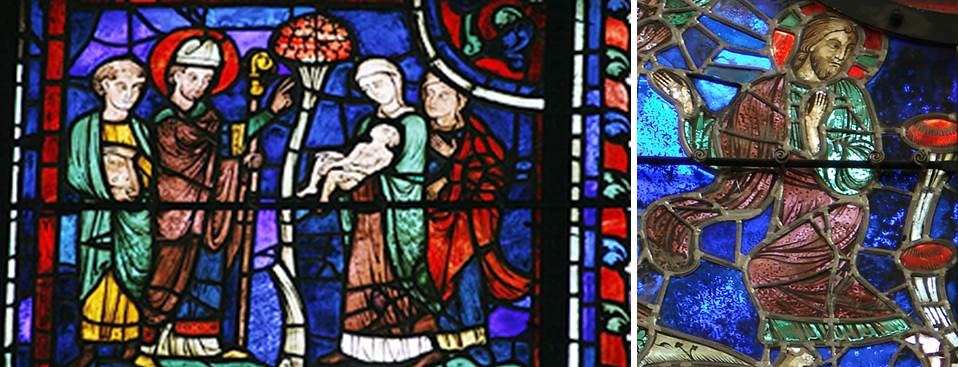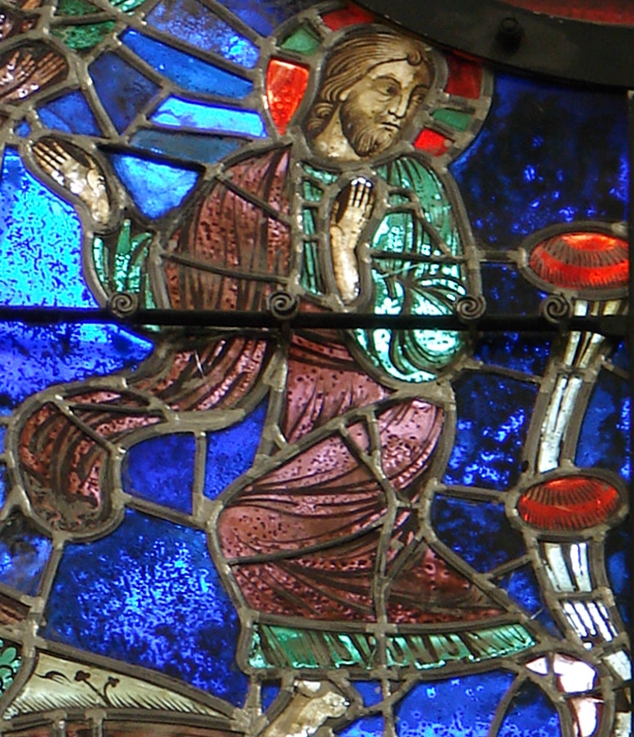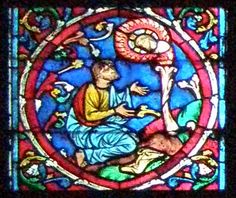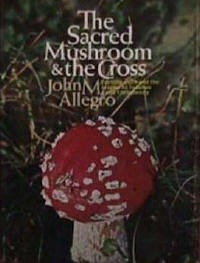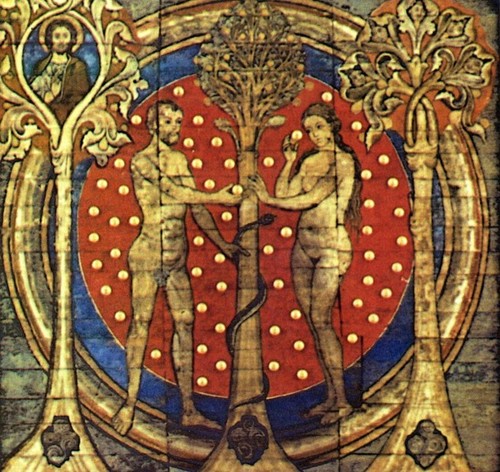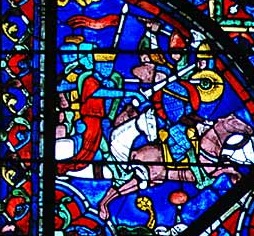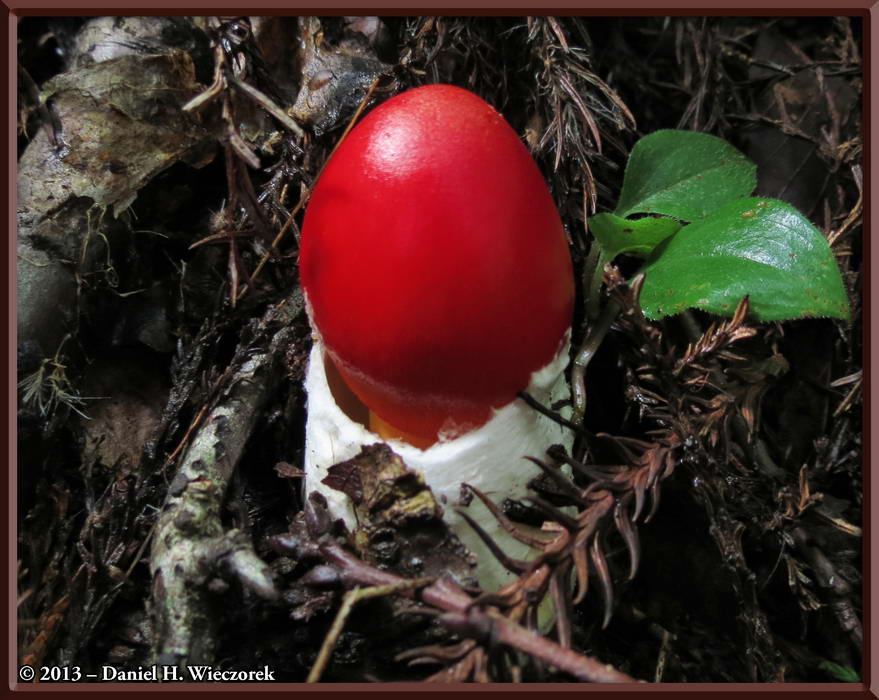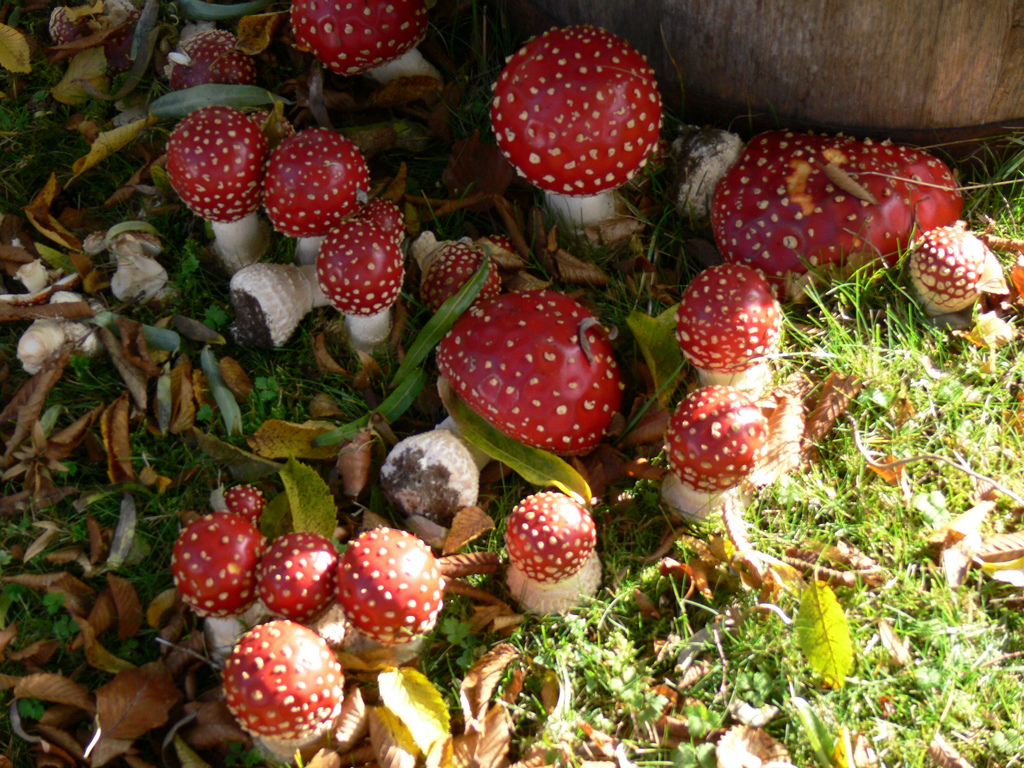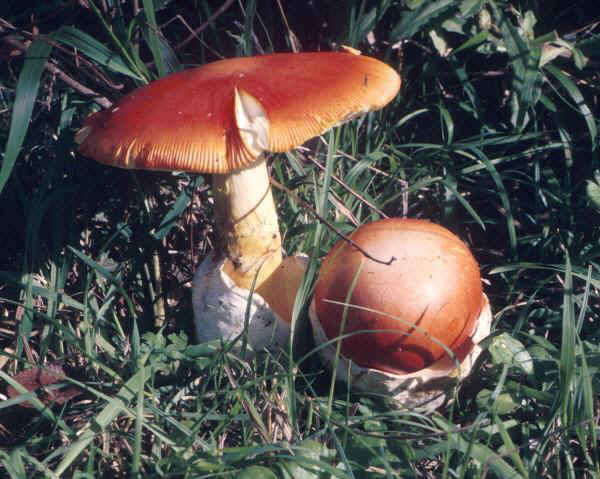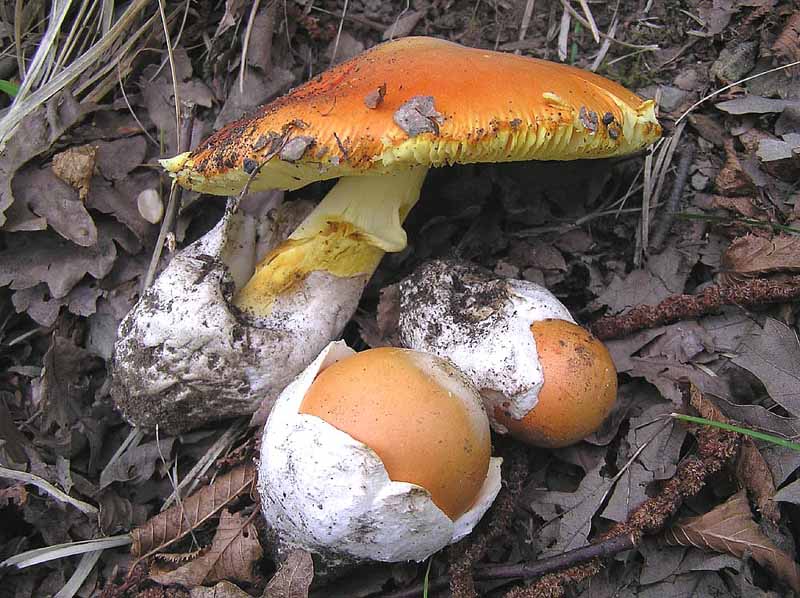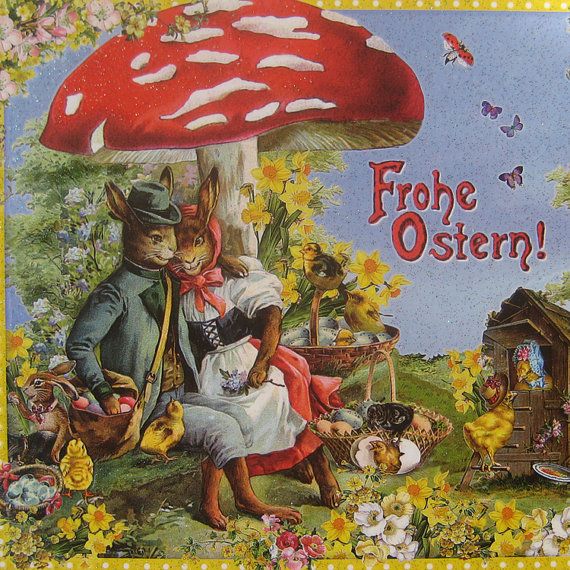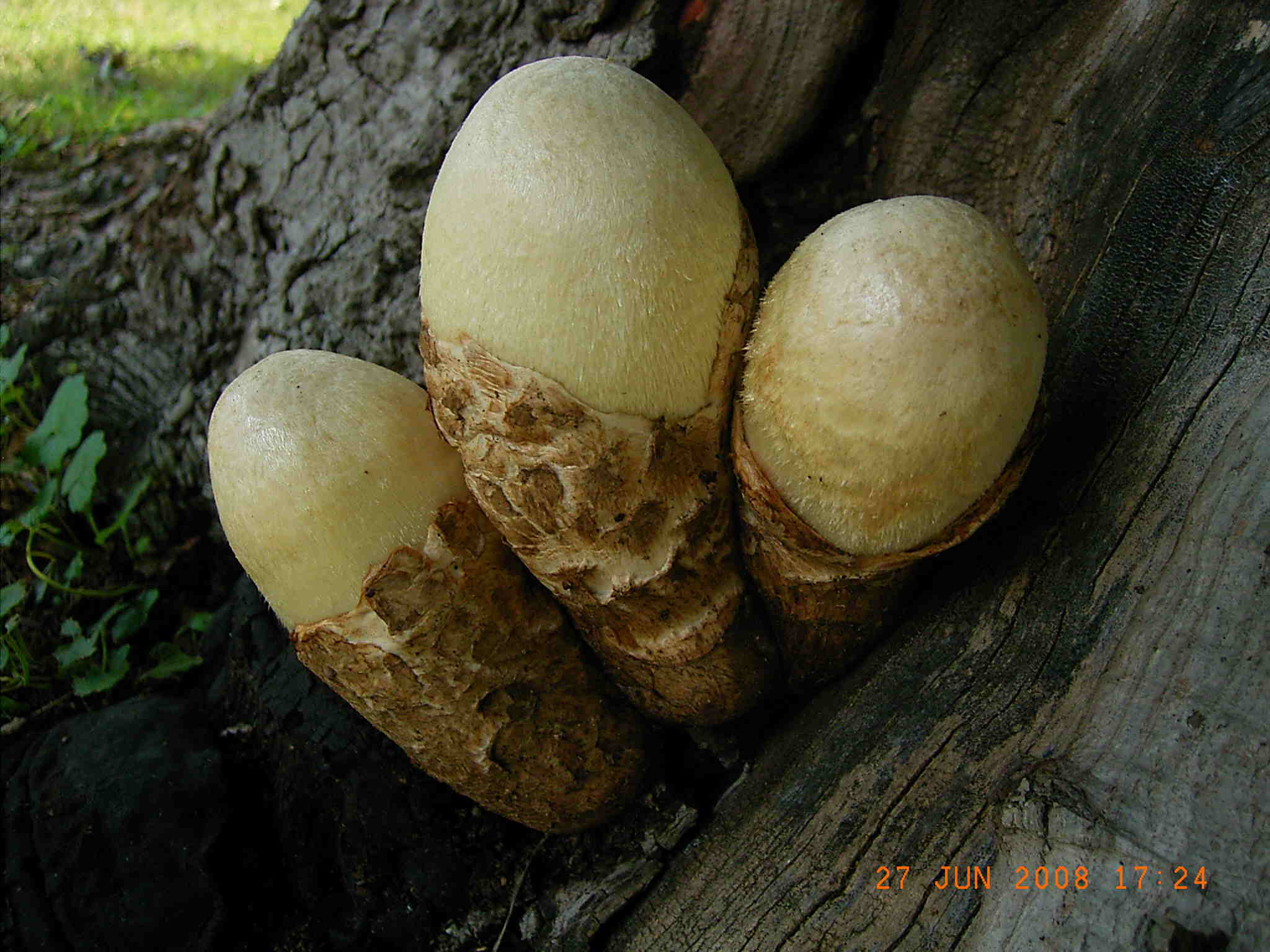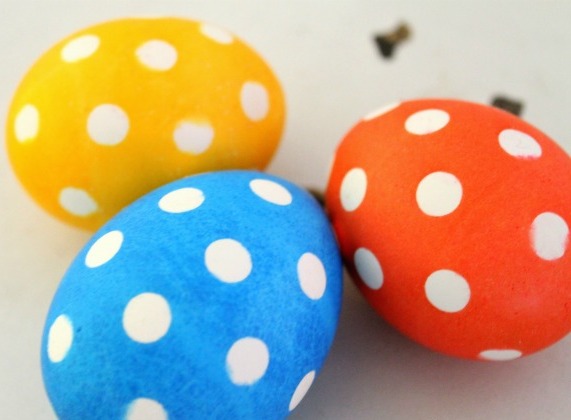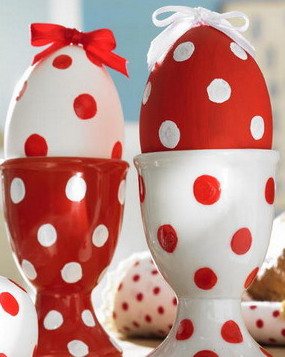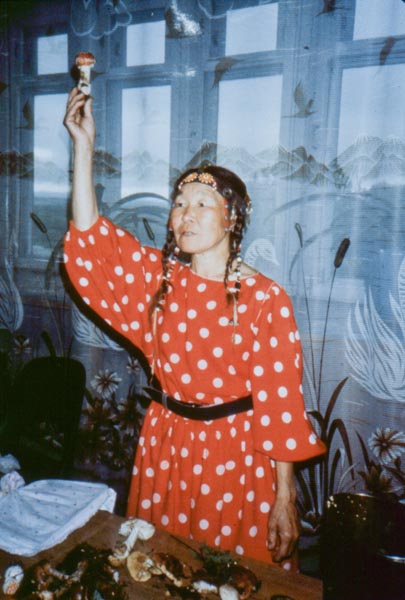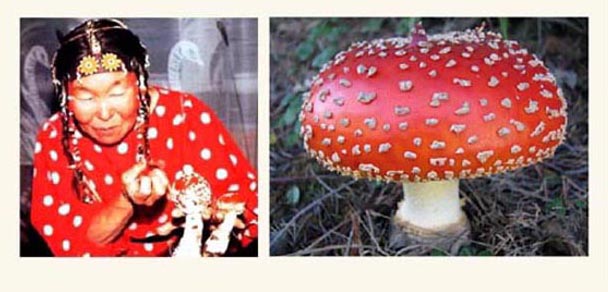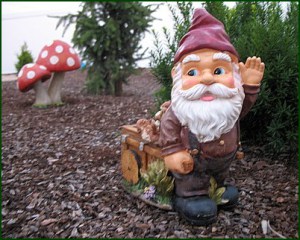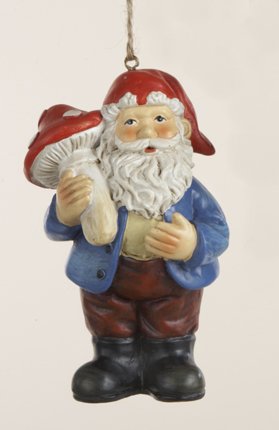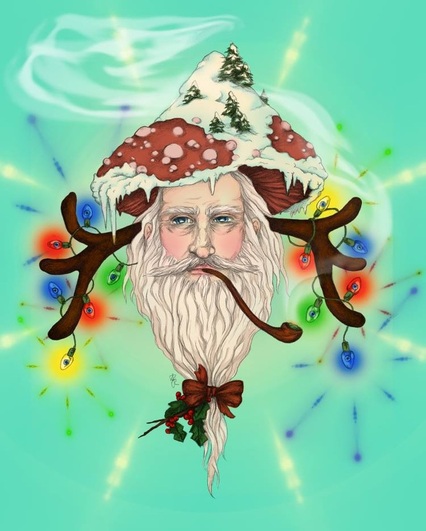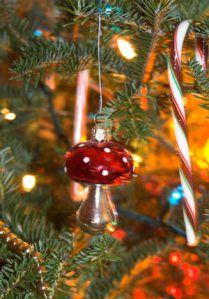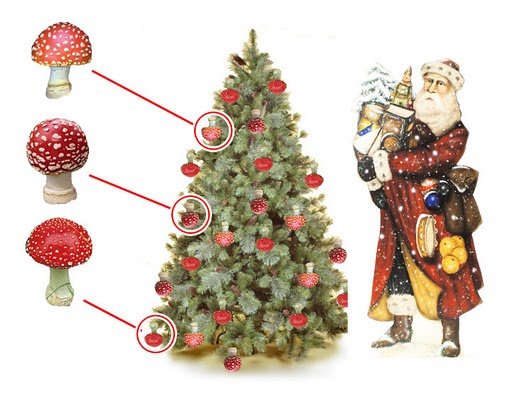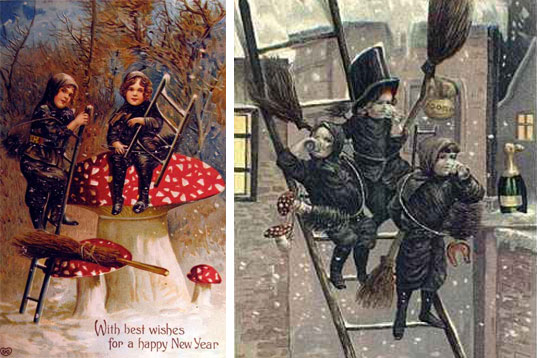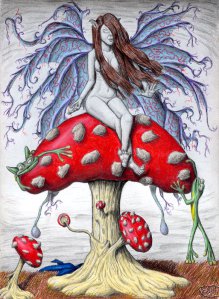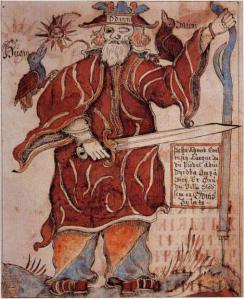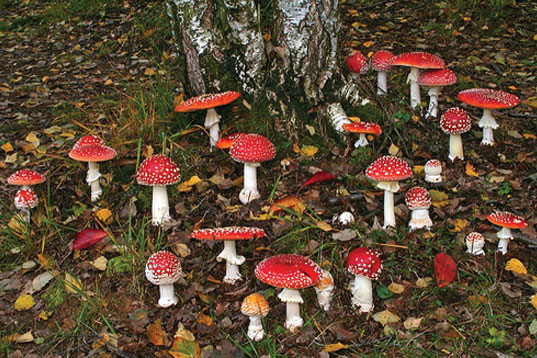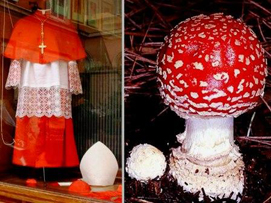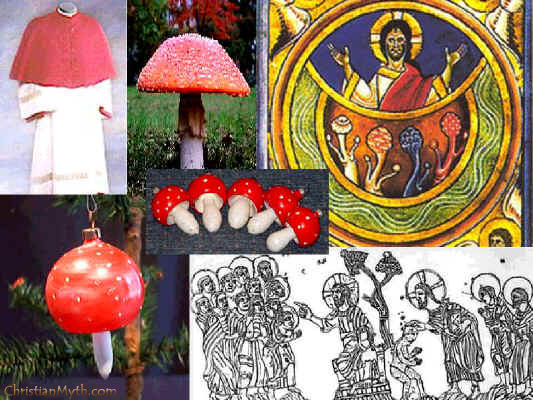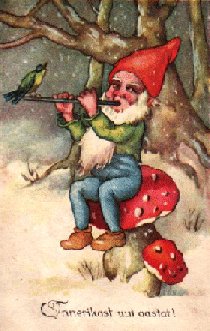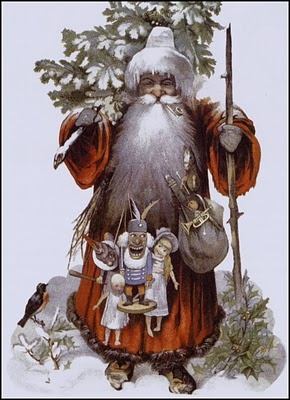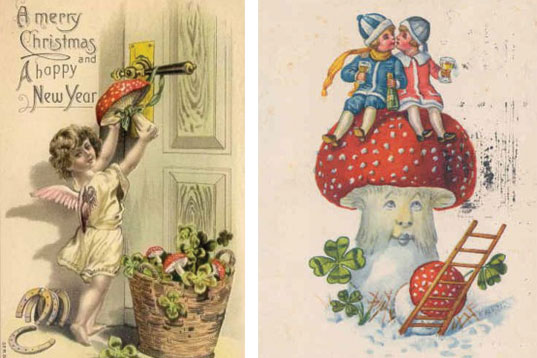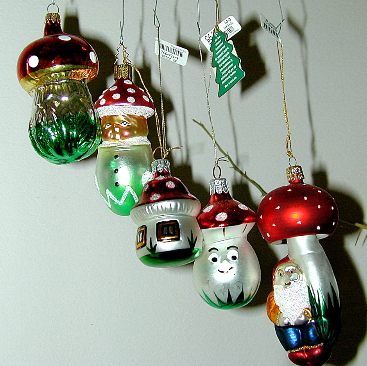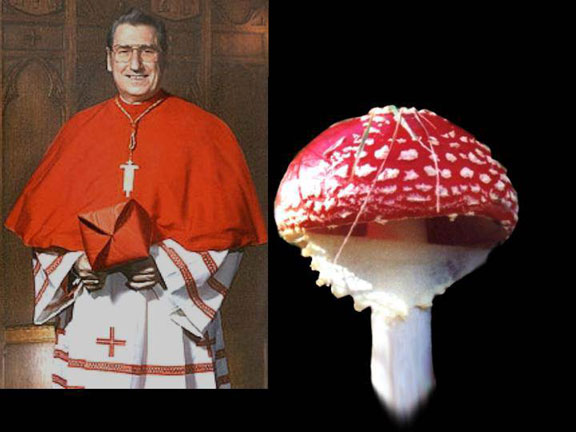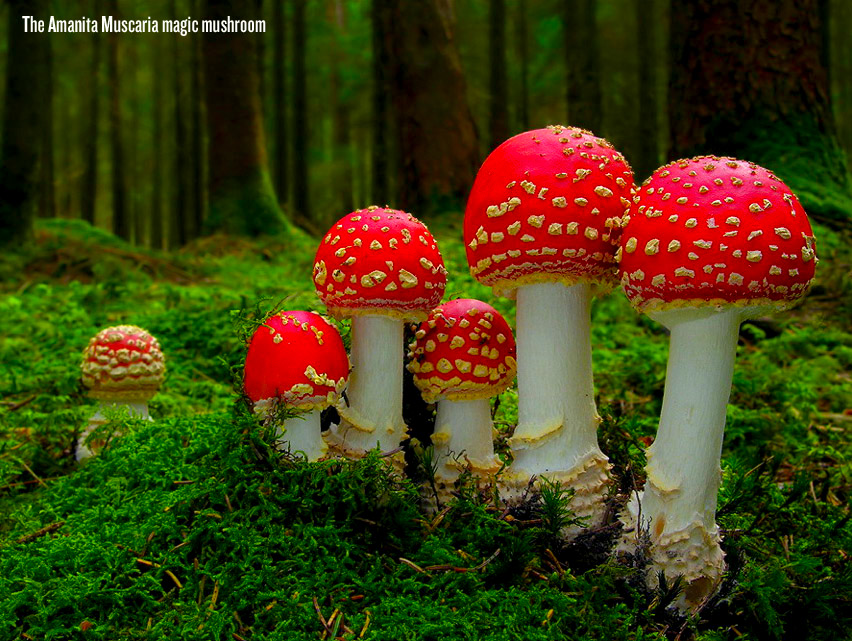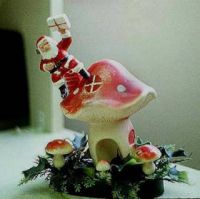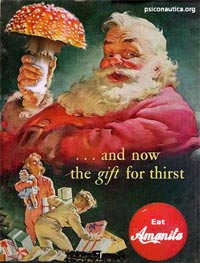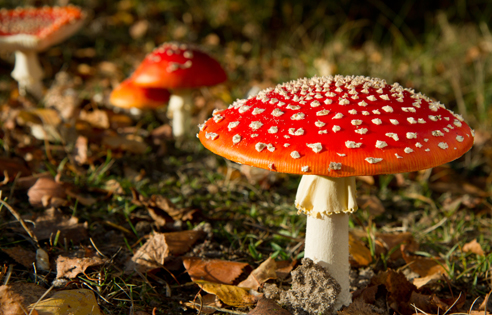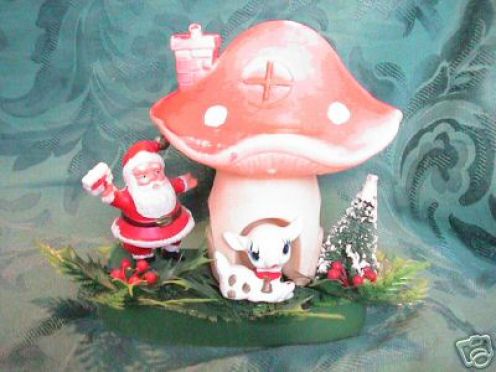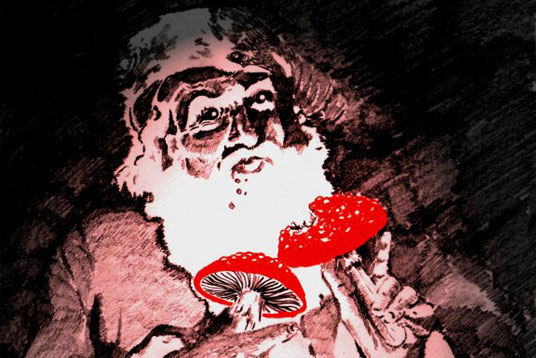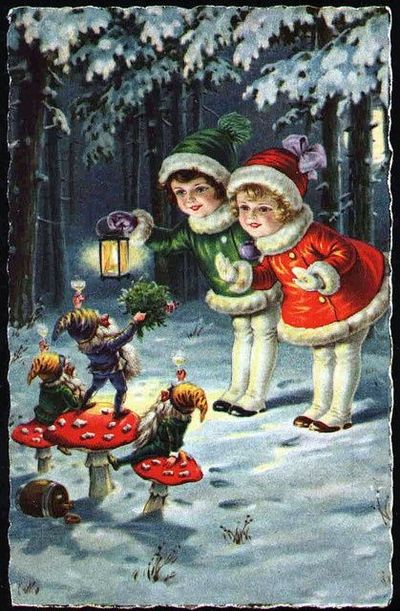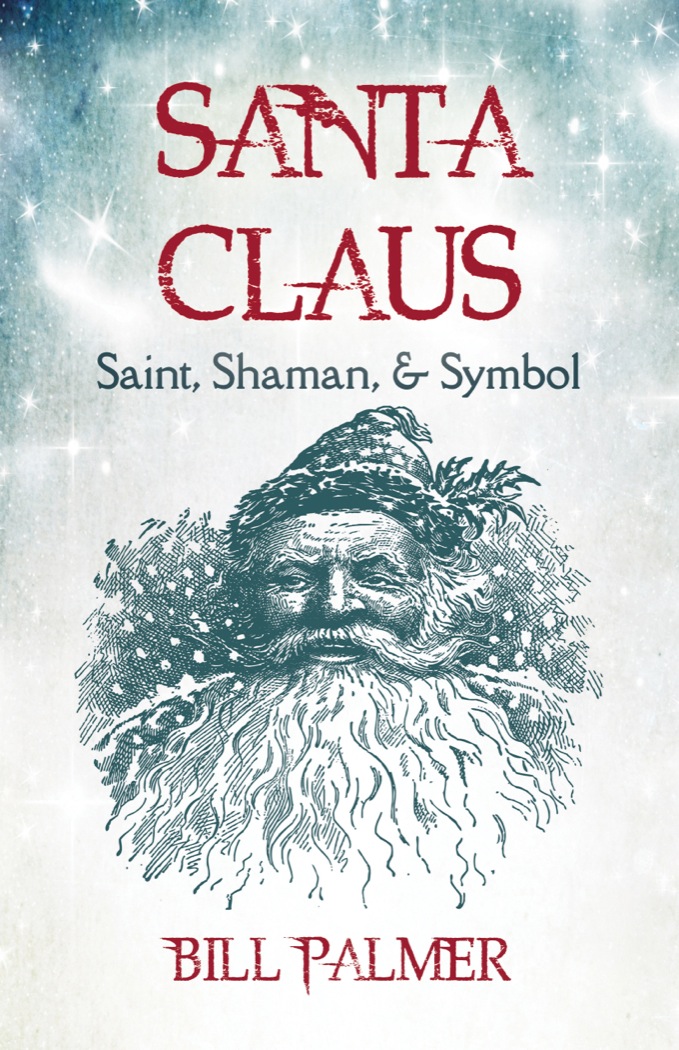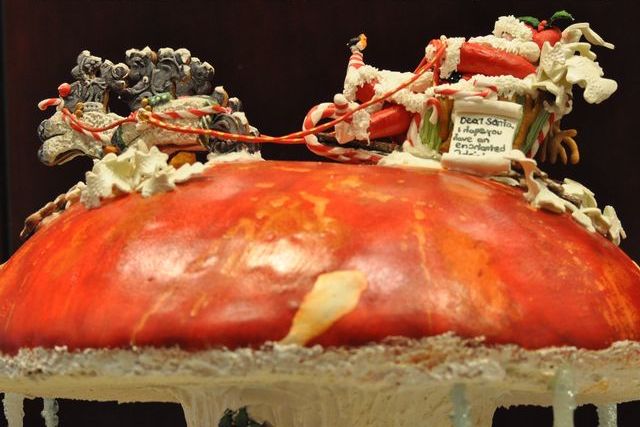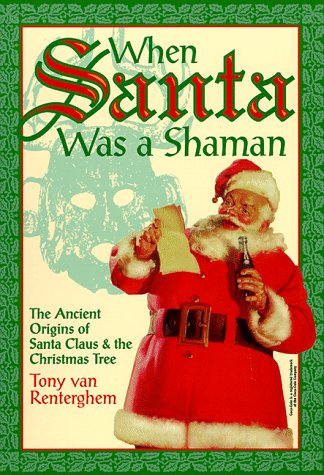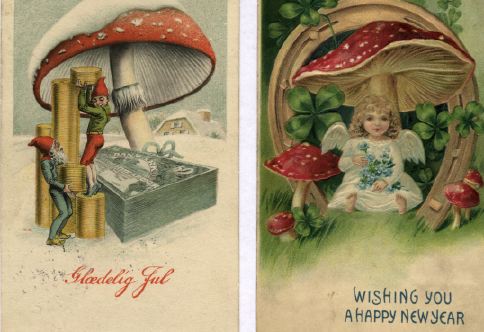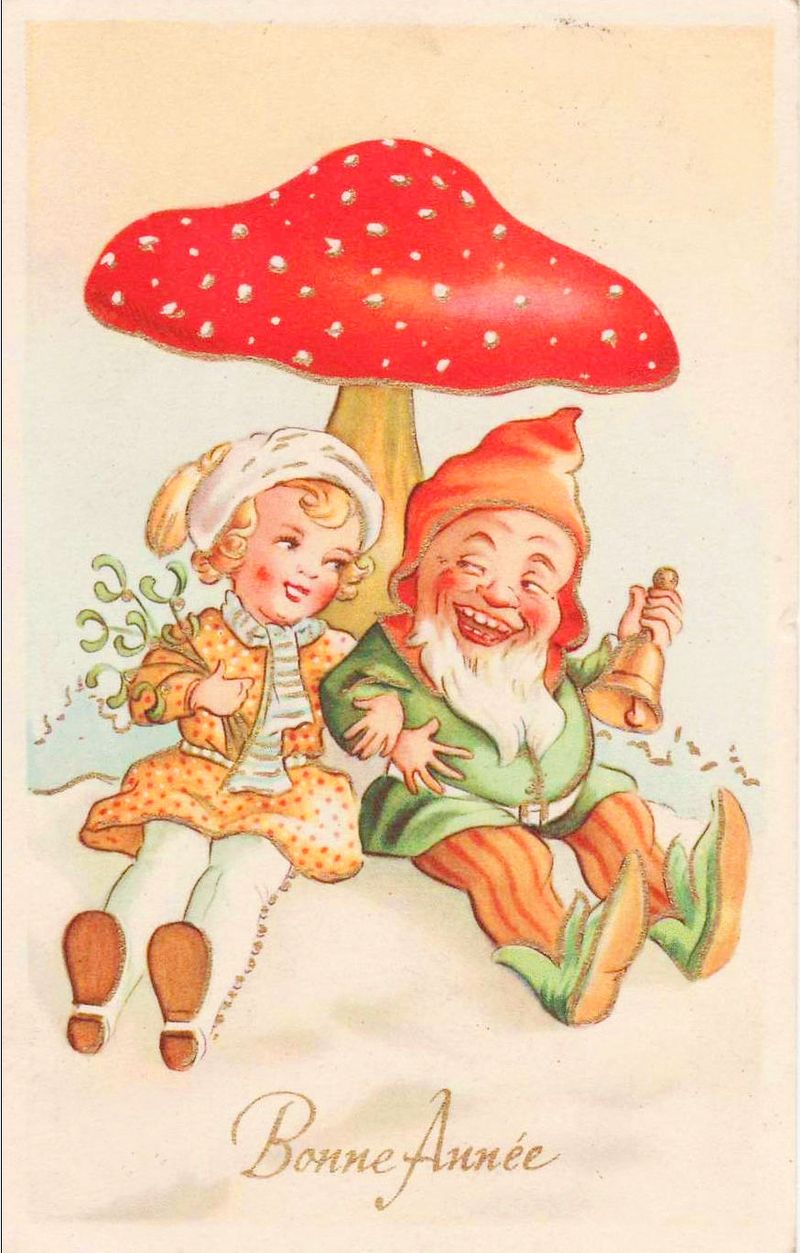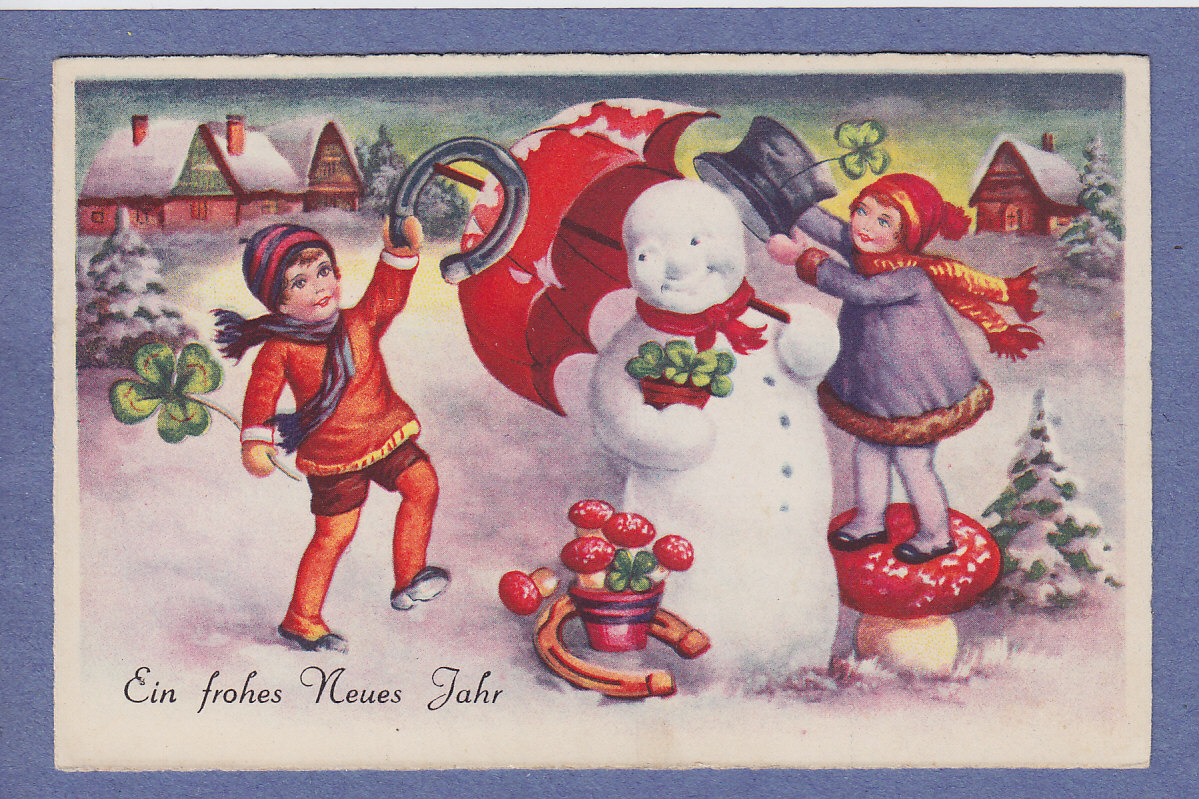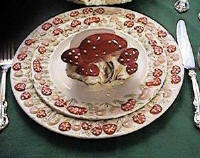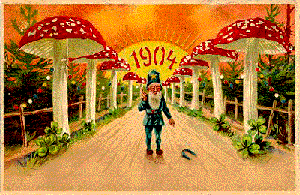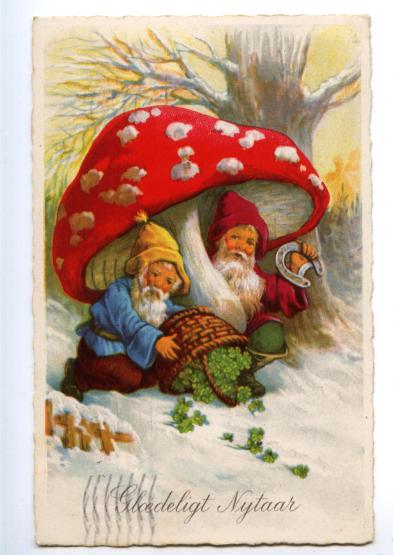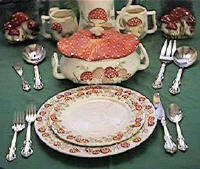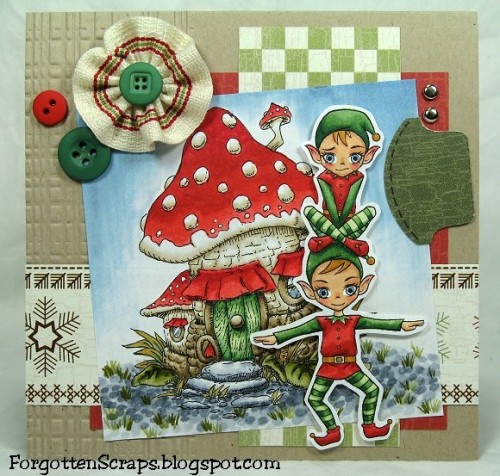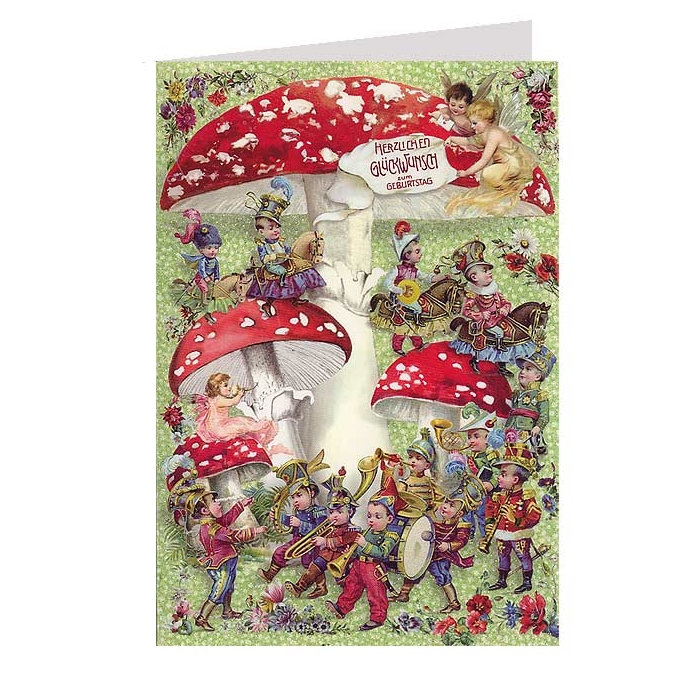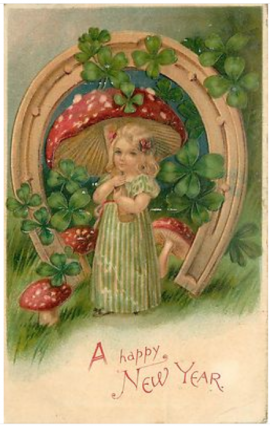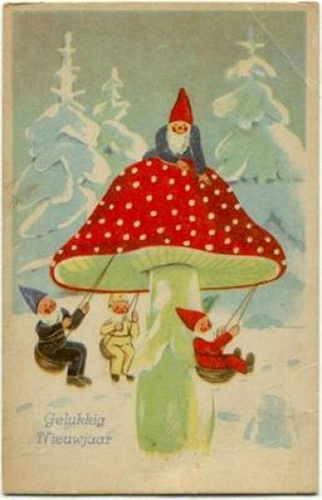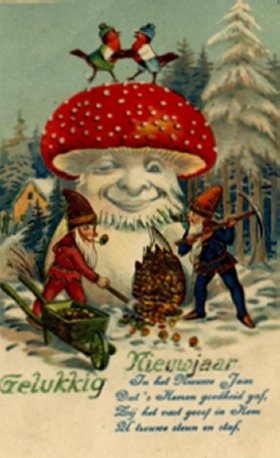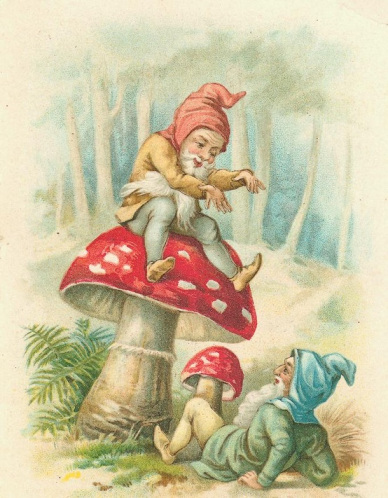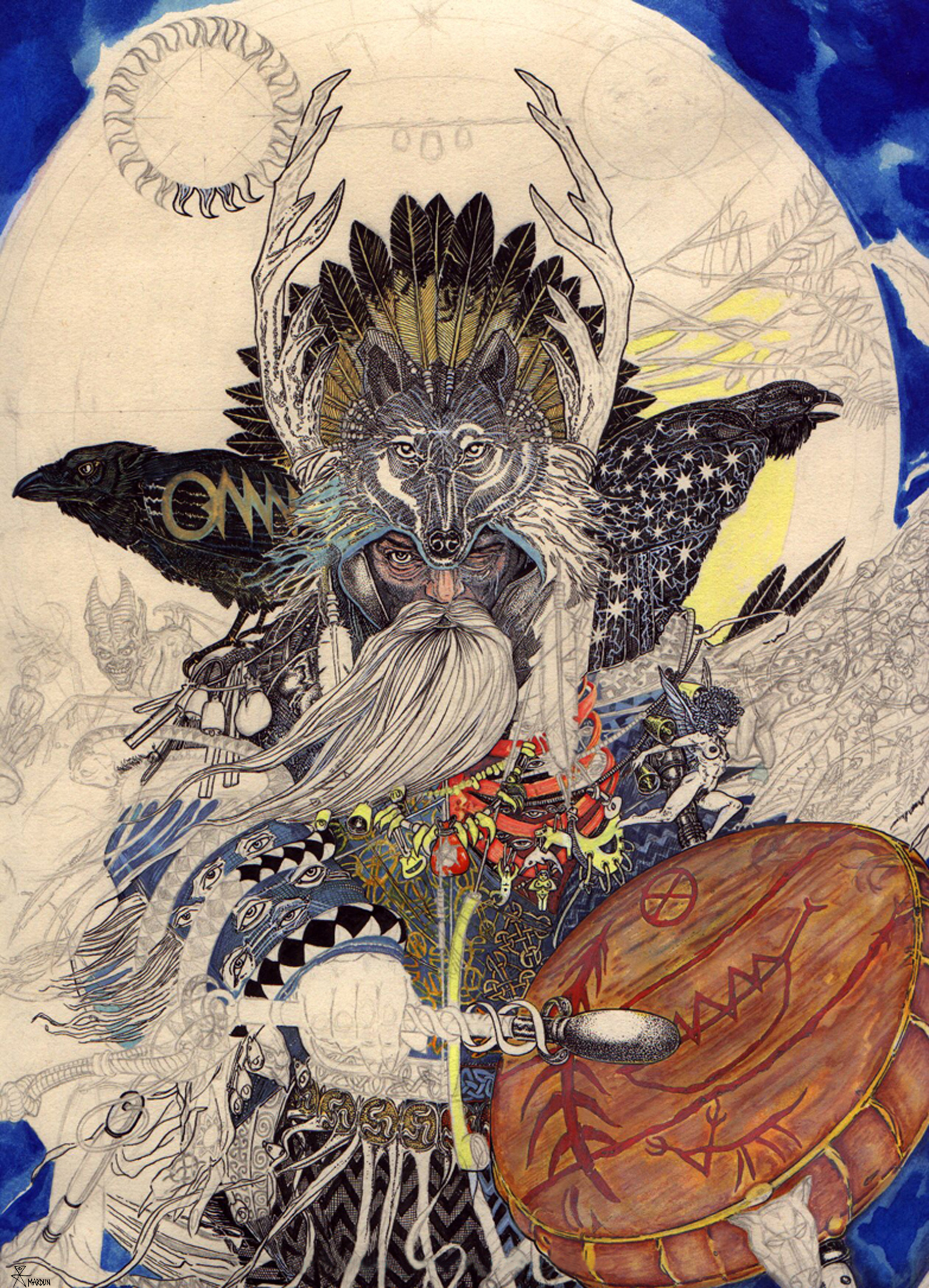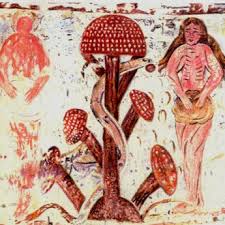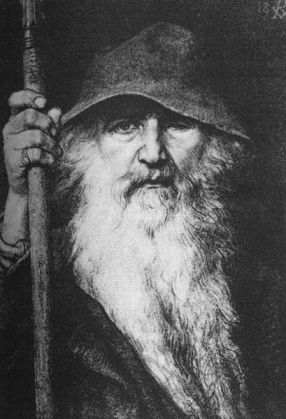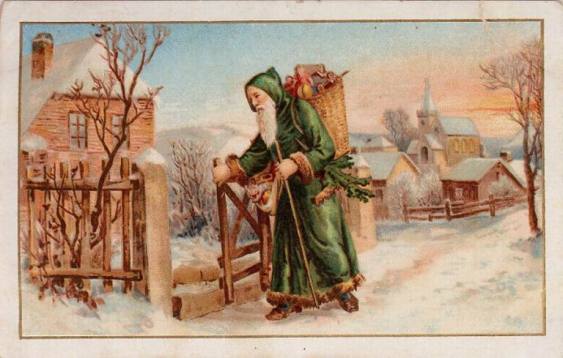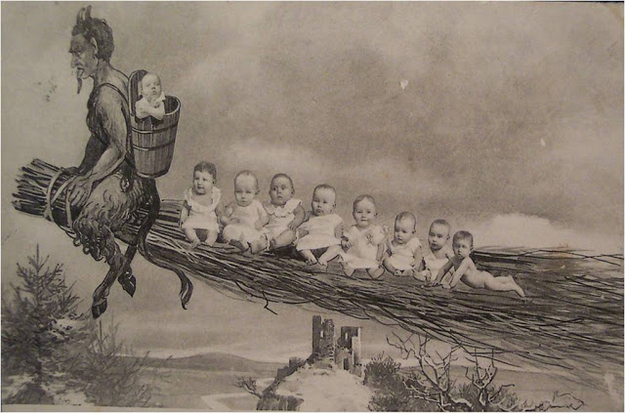A compendium of all Santa Myths & Origins
(plus additional references)
NOTE: CUT AND PASTE LINK. UNABLE TO EMBED.
Origins of Religion – Jesus as a Mushroom (Part 1-3)
FURTHER READING
A Typical RED variety of the Amanita muscaria. The Single most written about and mystically symbolized Mushroom throughout history. This Mushroom played a MAJOR role in the formulation of nearly Every MAJOR world Religion and world Mythology, as you will see, it is the primary focus of this investigation.The Amanita muscaria mushroom can be found at the roots of most of the religious writings our planet has to offer. Yet you will find within these pages very little in way of endorsement of any particular Religion. However, please bear with me when I interject my own philosophical opinions. Remember I admit openly that I certainly do not know everything. This is the result of serious study of the doctrinal/scriptural substance of each of the presented Religions, and an exploration into the hidden symbology and meanings within them. The discovery that although the Sacramental substance is unquestionably present, the organizations themselves have obscured the knowledge of it, was an Enigma. That is until the Political nature at the roots of Religion itself had been uncovered. Religions today do not answer this important question. Explaining it away as purely symbolic or of no importance. Religion has polluted itself by denying its own source and by removing the individuals ability to experience the effects produced by the substance that imparts GNOSIS (the joining together of the consciousness with the consciousness of the Divine). By the removal of this key knowledge Religion itself has become a lie. Especially when the same systems inspired by Entheogens have condemned their usage.In society today it has become taboo to present the expansion of consciousness by drug/plant usage of any kind in a positive light. Such is the case when one discusses in a negative light Government, Religion, or any other societal norm. While I have no use for Opiates (heroin) Or highly refined Coca (coke, crack) and no interest in Amphetamines (crank) I feel that a blanket assessment of all drugs as being DIRTY is not only unfair, But a classic case of Dis-information.Drugs in the Psychedelic category are commonly referred to these days (by those in the know) as “Entheogens” meaning simply the generation of God within. For the experiencer, the realization of God within ones own Consciousness.The facts are that there are many plants that have been known to Expand consciousness, increase awareness of self, and initiate one into the nature of spirituality. Thousands of PhD. Professors all over the world (in fields such as Botany, Ethno-botany, Entheo-botany, Archaeology, Anthropology, Philology, Philosophy, Psychology, as well as a plethora of other inter-related fields) have written Thousands of books/papers on the investigation and study of Psychedelic plants. Many such writings have dealt with the use of such substances by Spiritual practitioners in most every Religion formed on the planet. Most people are out of the loop in knowing about any of this. Throughout history each Tribe/Culture has looked for leadership and insight to the local HOLY person. Often known as a HOLY MAN or otherwise Shaman/Healer/Priest/Mage/Sage/Yogi/Magician. The insight these LEADERS possessed was largely due to their experience and understanding of Pharmacopeia (use of plants) and the insight offered by the use of these things. Different tribes and peoples used different Entheogens, largely determined by local availability. This RESPECT, reverence, and Authority held by the native shaman is a major problem for Government and Religion. This is why Pharmacopeia has been demonized and dis-reputed as something of the DEVIL. The Spanish (Catholic) inquisition and Witch hunts are prime examples of this. As well as the stealing of land and other properties done in the name of GOD by murdering over EIGHT MILLION people that the Church/Government tried as witches up till the 19th century. There is also the matter of an estimated twenty million indigenous Central Americans murdered (exterminated) bringing about the near extinction of the Aztec/Inca/Mayan peoples. The underlying agenda is the repression of the knowledge of Entheogenic plants which if it succeeded would insure the peoples loyalty to established Religion in all matters pertaining to GOD. Primarily due to the inability of experiencing God for oneself. Since Government and Religion are the controllers of the world, An independent Shaman/Priest/Mage/Magician/Prophet is a threat to their loyalty and Authority.The Sacramental use of Entheogens has only come into a BAD/DIRTY light recently. Largely due to the lumping together of any and all substances used by people (whether for Spiritual purposes or simply recreation) and classified as BAD for you, Evil, Vile, and DIRTY. This PROHIBITION is the source of the inept, corrupt, and oppressive (monetary based) WAR ON DRUGS. In realty, despite the incredible amount of evidence that humanity’s origins of spirituality are inseparably linked to entheogens, Governmental prohibition continues to rob each individual of their human right to direct access of understanding the nature of spirituality by the traditional and ancient means provided by mother earth.People who follow the Governmental lead in this field without researching the subject on an individual basis are commonly quick to jump to conclusions and Condemn things they really know nothing about. Of course, there are actually people who believe that anything the Government says must be true. UNFORTUNATELY.. Yet they have absolutely No personal experience, no research, no real understanding. An opinion really based on Ignorance.This is not only SAD but actually quite SICKENING. The Propaganda pushers certainly have their own AGENDA, which BTW leads the mindless masses of sheep right down the road of foolishness. Becoming unknowingly the pushers of the Oppressive Dis-information and Propaganda themselves. All in the name of being right, proper, clean purveyors of the TRUTH.The simple REALITY is that plant Entheogens are Spiritual in nature.
I Prefer “Just say KNOW” to the Oppressive Fascist Propaganda “Just say no”
One more thing before we get going…
Its the use of Heroin, Crack, and Crank that The Government throws on the table to cause panic in the minds of people, has allowed them to ERODE the Constitution away into a now historical Document. By passing unbelievable laws all under the guise of Stopping the use of Drugs, and saving our precious children from the vile Drug pusher. While all along its been the OSS and then the CIA that bring the highly addictive drugs (Heroin/Crack) that DESTROY peoples lives into the Country. If you don’t think this could be true, then Take a look at this:
The CIA/OSS and the War on Drugs
You have heard the RUMORS and the DIS-INFORMATION about them.
Now LOOK at the Documented EVIDENCE
Perhaps our favorite FREE-THINKERS and Musicians (by taking certain Plants) and Smoking Certain Herbs (also religious) should be praised for the insight and understanding they have received in life through these things. Not be condemned and thought of as DIRTY for their use of the same. Of course Heroin problems are very dangerous and damaging and I am NOT talking about that. Besides it is their highly addictive properties that are exactly what make the MAFIA/CIA/GOVERNMENT wet their lips from excitement (due to huge profits involved) not caring what damage they do to people. Also the natural ENTHEOGENS are NOT a hot commodity for them. For one thing, they actually make you think, which is the ONE THING those AGENDA driven Power and Money hungry MONSTERS would prefer you didn’t do.
With that said, lets get going… :o)
Chimneysweep
Figure 2. Artwork as Revelator
Amanita muscaria is a Good Luck Charm associated with the Four-Leafed-Clover in artwork and traditional Superstition. It is not restricted to Pictorial art in obvious places. Sybmolism associated with the mushroom is found throughout Religious artwork as well. Decoding these Religious art symbols has always been a pet peeve of mine. It seems when you start to look there is Mushroom Imagery everywhere. For good reason, as the story unfolds you find that the depth of understanding religious art is directly associated with the depth of your understanding of Symbols.
Mushroom
Figure 3. The Little People
Often associated with Gnomes, Fairies and “Little People” The beauty of this mushroom makes it a favorite for artists. The Mystical aspect is generally reserved for those that happen to be “In The Know”.
“The Hidden Meanings of Christmas”
What are the origins of the Christmas traditions? Most people never think to ask this question. Those that do find a seemingly complete dogmatic system of explanation. Then of course there is one day the discovery that Santa Claus does not really exist. But… Does he? Many things have been written in an attempt to trace Christmas’ development. You can find books on this subject and even those who consider themselves experts in this field. I suppose you could call that field Santa-ology, or perhaps Santa-ism. Yet long lost into the realm of simple traditions are very amazing symbolic connections, and origins that are long forgotten, or perhaps intentionally overlooked. To know the meanings behind the symbologies that to most people have dogmatic explanation may open the doorway to understanding the hidden symbology of many other religions. Several books have been written about the Amanita muscaria (Mushroom). This Mushroom is found growing under Pine trees (Coniferous trees), Birch, and sometimes Oak all over the World. The Pine tree is one of the main relics of Christmas.
The Santa Claus, and Christmas holiday (of today) have metamorphosised out of many older Mythologies and traditions. What are present today as icons, symbols, and relics that have managed to find their way into the Winter Solstice celebrations have a commonality that deserves some reflection, study, and perhaps even some reverence. Understanding these borrowed from traditions is central to getting at the root of the true meaning of Christmas.
SantaFigure 4. Santa as a Shaman
The Santa Claus (of today) is a metamorphosis of many older Mythologies. Including THOR or Donner (German) who wears red and rides in a Golden Flying Chariot pulled by two Goats (Cracker and Gnasher). These Goats were in a sense the ancestors to the now popular Reindeer. What would the red and gold clad angel be doing with that nice basket? An Easter basket at Christmas is an interesting concept.
So Where does this enter the Christmas tradition?? Many Christian beliefs and traditions were borrowed from more ancient Religions and Mythologies. The virgin birth, The incarnation of God, The Sacrament, Christmas, Easter, Etc. Christmas has been adopted by Christianity as one of its holy days.
It is well documented By Fundamentalists (apologists) that the Christmas traditions are Pagan in origin.. This simply means that their origin comes from the traditions of the country folk (pagan). The Pagan origins of most of the other attributes of Christianity are usually vigorously denied. It is also very easy to obscure, overlook and discredit the Hindu, Egyptian, Mithraic, Germanic, Greek and Buddhist roots by lumping all other religions together and labeling them Pagan. These are certainly not simple country-folk religions. So to say Christmas has Pagan roots is glossing over what exactly those roots are, and discrediting their study as worthless. Many of the Christmas traditions and stories have hidden meanings. Not apparent at first look, a more thorough investigation reveals there is far more symbolic content which is decipherable than suspected. At the roots of this search is the secret of the Mushroom, its habitat, form, users, effect, and symbolism.
Siberian Shamen used, and still do today (despite Governmental oppression) The Amanita muscaria as a Religious Sacrament. The value Of the inebriant is placed highly among the commodities of the natives. Fetching Reindeer pelts and meats in payment and barter. Interesting to note That if you aren’t quick enough, you will find only the mushroom stubs, the rest greedily gobbled up by the hungry Reindeer. The Shamen of Siberia and the Russian Icon St. Nicholas both play parts in the tale of Christmas. Including where Christmas came from, and why there are certain Symbols associated with the holiday.
Santa
Figure 5. Christmas Ornaments
The Tradition of Ornamenting a tree is likely from the tradition of “The Paradise tree” a fir tree decorated with apples (represented the fruit of The Tree of Knowledge in the Garden of Eden). In Germany during the Middle Ages a popular play was staged on December 24th (the religious feast day of Adam and Eve) symbolic of the Paradise story. Candles (symbolizing Christ), and cookies (originally wafers, symbolizing the Christian sacrament) were also hung on the tree, which is another symbolic connection. This Ornament is of particular interest because of the association with the Fruit of the tree of knowledge and the Amanita muscaria. This indicates that there have always been people “In the Know” from time to time. Originally the Fruit of the Tree of Life and the more recently added Fruit of the Tree Of Knowledge were one in the same. This according to Apocryphal texts.
So why do people bring Pine trees into their houses at the Winter Solstice? Placing brightly colored (Red and White) packages under the boughs to give each other as a token of their love and as a representation of the Love of God and the gift of his Sons life??
This is because, in nature THAT is where you will find this “Most Sacred” Substance. The Amanita muscaria. These Mushrooms grow in a Symbiotic/Mycorhizal relationship with the Pine tree. This means they grow always underneath the tree. People symbolically place gifts under the tree at Christmas. Acting as a sort of proxy present givers. Doing the work of God/Santa. Each celebrant mimicking the act of Nature/God in placing under the tree a GIFT. Big clue here!!! Winter brings rains… Rains bring Mushrooms… Go to the mountains around Christmas time, Look under the Pine trees. What you will find under them unlocks the Key Mysteries of the Universe. Through Multi-dimensionalizing the consciousness in a way that no other substance known can. This Gnosis (joining together of your mind with the mind of the Universal Consciousness) is what the Sages, Mystics, Teachers, and Prophets were talking about. Even if only in symbolism. And show it in Symbolism they did.
The Christmas Tree
All over the world people bring Coniferous trees into their houses and place brightly colored packages underneath them. In Nature, this is where you will find the Amanita muscaria (under coniferous trees). These particular Mushrooms grow in a symbiotic relationship with these particular trees. The actual living body is called Mycellium. It attaches to the roots of the tree awaiting the drop of a spore which produces the Fruiting body (fruit). The Mushroom is literally the Fruit of the Tree. As they grow in a Mycorhizal relationship with the tree, they are not parasitic. The tradition of bringing a tree into the home, and putting presents under it, is a custom that many follow. Most have absolutely no idea why. Even people that think they know, usually have no knowledge of this. The Symbolic meaning behind this transcends Etymological and Historical evidence.
1. Saint Nicholas is the patron Saint of children in Siberia (Russia)
2. The Mushrooms (Amanita muscaria) grow nearly exclusively under the Christmas (Coniferous) Trees.(Birch also; Another whole story)
3. The Reindeer eat these Mushrooms.. Hence the presumed flight.
4. Santa brings presents in his Bag. Mushrooms are gathered in Bags.
5. The Mushrooms are Red and White.
6. The Mushrooms are typically Dried by hanging them on the Hearth of the fireplace on strings. Just as stockings are hung in the same way
7. The Virgin Birth is Symbolic for the Mushroom. It grows without seed (Spores are microscopic) and it’s appearance was thought to be Miraculous because of this.
8. The very name Christmas.. Is a Holiday name composed of the words …Christ (meaning the Anointed with the Magical Substance) …Mass (a special religious service/ceremony of the Sacramental ingestion of the Eucharist, the Body of Christ.) In Catholic Tradition this Substance (Body/Soma) Has been replaced by the doctrine of Trans-substantiation, Whereby (in magical ceremony) The Priests claim the ability to transform A cracker into the literal Body of Christ.. IE. Substitute/Placebo.
St.Nick
Figure 7. Saint Nicholas
Saint Nicholas (Patron Saint of Children among other things) is the most revered Saint in Russia, second only to the Apostles. He is The Russian Orthodox Church’s counterpart to the native peoples highly respected local Shamen. A Shaman is a holy man that is well acquainted with a form of spirituality that incorporates plant entheogens that facilitate the NDE or out of body experience. Saint Nicholas was not likely to have been a Shaman, however the Symbolism on, and coloring of his Robes can lend to speculation.
The ancient Shamanic use
of Amanita muscaria in Siberia is well documented. Despite Governmental Oppression (of its use) there are still many who refuse to accept the Authorized State Religion, and continue the Shamanic traditions in secret. The Siberian Shaman (commonly dressing in red and white) would enter through the opening in the roof of a home where a ritual was to be done. Santa Claus (on the Holy Day) brings presents in his BAG. The Shamen gather the mushrooms in bags which they would bring with them when performing a ceremony. The Santa Claus we see today evolved from traditions developed in Germany. The Sinter Klaus was a conglomeration of older Germanic/Norse gods such as Thor, Donner, and Odin or Wotan. This knowledge is fairly common. What is missing here is that Odin rode through the sky in his charriot which is depicted in the stars by “The Big Dipper”. The Big Dipper is the charroiot of Odin and Wotan, And Thor, and King Arthur, and even Osiris (Egypt). The charriott that circles the North Star in a 24 hour period is thus also known as the sleigh of Santa Claus, which circles the mythological home of Santa (the North Pole). Thor throws his hammer (which is shaped as a mushroom) to the ground and with a mighty Thunderous ligtning crack it appears. Odin rides the sky in his charriott pulled by horses which are exerting such an effort that their spit mingled with blood falls to the ground and the places where it hits mushrooms (Amanitas particularly) grew. The Osiris mythology has even more to add to this. First off to the Egyptian’s South was up (north). Osiris was the lord of the underworld (south) which is why he circles the sky in the furthest possible under (south) area. Not only did Osiris ride the sky in a charriott, but after his death Isis found that an evergreen (Cedar) had grown full sized from a dead stump overnight (this also relates to the Djed pillar) this was understood as a sign of Osiris’ rebirth and immortality. The birth of Osiris is interestingly the 25th of December (traditional). The 25th of December was also celebrated annually by putting presents around the Cedar tree. This tradition is at lease five thousand years old. The birth of Horus to the goddess virgin mother Isis is perhaps the eldest representation of the goddess/son mythology, yet it is impossible to know the true date of this or how old the Astro-theological Virgo giving birth to the child/god/star mythology is. However it is the oldest source I have found. And very old it is. The Mushrooms are typically dried (a necessary procedure) by stringing them up (like popcorn) and hanging them above the hearth of the fireplace. Shamen, and Lay people alike, would gather and dry them. They are a valuable commodity. Reindeer (native to Siberia) eat these mushrooms. The Mythology of Reindeer taking flight reflects the supposed effects they get after such a meal.
It is important to point out that this Christmas/Winter Solstice celebration, with all its various counterparts, transcends the worlds religions. It may be that the reason that this celebration is held all over the planet in various forms has something to do with this other commonality which we are looking at. It certainly is intwined in the symbolism.
Here are some of the countries around the world and the names of their respective Santa Claus’.
Australia – – – – – – – Santa Claus
British Isles – – – – Father Christmas
China – – – – – – – – Dun Che Lao Ren (dwyn-chuh-lau-oh-run)
Czechoslovakia – – – -Svaty Mikalas
Denmark – – – – – – -Julemanden
France – – – – – – – -Pere Noel or le petit Jsus
Germany – – – – – – – Saint Nicholas or Weihnachtsmann
Greece – – – – – – – -Saint Nicholas or Santa Claus
Iceland – – – – – – – Jolasveinar. (13 of them) Stekkjarstaur, Giljagaur, Stufur, Thvorusleikir, Pottaskefill, Askasleikir, Hurdarskellir, Skyrgamur, Bjugnakraekir, Gluggagaegir, Gattathefur, Ketkrokur and Kertasnikir.
Italy – – – – – – – – La Befana
Japan – – – – – – – – Hoteiosho
Netherlands – – – – – Sinterklaas
Norway – – – – – – – -Julebukk
Russia – – – – – – – -Saint Nicholas
Scandinavia – – – – – Julenisse
Spain – – – – – – – – Balthazar
Sweden – – – – – – – -Tomte
Wales – – – – – – – – Mari Ilwyd
United States – – – – Santa Claus
This list is by no means inclusive: it was partially obtained from:
–The World Book Encyclopdia.
setting service
Figure 8. A sacred meal setting and service
This place setting and service which was contributed by a very good friend who has been always an inspiration to me is certainly a real fine example of what a truly enlightened Christmas meal is all about. You don’t have to read very far into this symbolism to realise what the table is saying about dinner. The idea of a Sacred meal is incorporated into many ancient traditions that also celebrated the birth of the God on December 25th. The Sun as it reaches the winter Solstice ends its course across the heavens and appears to stop for 3 days, then it begins anew its trek across the heavens towards the Northern hemisphere. This 3 day apparent stoppage is mythologized as the death of the Sun of God on the cross of the celestial 4 points, and after the 3 day waiting period it was thought to return to life, as it begins its precession across the sky. Later mythologies transfer the death on the cross to a hanging on wood, and the 3 day death to The Son being locked inside a tomb. The fact that the mushrooms must be dried (before consumption) is another euphemism that the god must die (sacrificing himself) to save mankind through enlightenment by giving his own life.
This is only the beginning. A few of the associations this mushroom has with the Christmas traditions. Here are some Synonymous names and/or terminologies given to this Mushroom throughout history, many of which we will be exploring further.In fact, there are so many that expounding upon them could take a lifetime, therefore, obviously, this list is not all-inclusive. The Egyptian term; “the God of a thousand names” begins to make sense as this research begins to encompass so many other traditions, mythologies and religions.
1. SOMA (Hindu plant-god). Soma is also Greek for “body”.
2. Amrita (Buddhist Magical Sacrament).
3. Ambrosia (Greek, “Food of the Gods”).
4. The Holy Grail (note the Grail-like shape of the upturned muscaria mushroom; “Vessel containing the blood of the God”).
5. Fruit of the Tree of life: Fruit of the Tree = the mushroom; the main body (mycellium) growing underground in a Symbiotic relationship with the Pine tree.
6. The Golden Fleece
7. The Fountain of Youth: Ponce De’ Leon is likely to have unknowingly kicked over the very thing for which he was searching; the red muscaria grows under Longleaf Pine in northern Florida in December.
8. Haoma: Islamic Sacrament.
9. Manna: There are two kinds in the Bible; see John ch. 6 to 14. Manna means “mushroom”.
10. Bread of Life: Yes, it’s the “Loaf of Bliss”.
11. Fountain of Living Waters: Its alive, 90% water, and shaped like a fountain.
12. Hidden Manna: See Rev. 2:17
13. The Cosmic Egg, The Easter Egg (What are we really mimicking at Easter? The mushroom hunt, OF COURSE).
14. The Prima Materia/Philosophers stone: The secret substance of the Alchemists (Get Clark Heinrich’s book “Strange Fruit” for this one; fascinating!).
15. Soma: The Hindu plant God and elixir of immortality.
16. The Flesh of the God: The mushroom is very flesh-like and is depicted so.
17. The Fruit of the Tree of Knowledge/Life.
18. The Flesh of Jesus, and other Gods (Take and eat. This is my “body” [Greek, “SOMA”]).
19. The Hammer of Thor: The shape is obvious. Thor throws his mushroom-shaped hammer to the ground in a bolt of lightning and a mighty thunderous CRACK. Lightning is the mythical creator of the mushroom.
20. The Small White Stone: The infant state of the mushroom resembles a small white stone.
21. The Elixir of Immortality: The churning-of-the-milky-ocean myth describes this in a phenomenal way.
22. The Feathered Serpent: From its first egg-state to its snake-looking second state, then shedding its universal veil (shedding its skin) and finally upturning its cap (gills resembling feathers). The feathered serpent is cosmopolitan in its symbology.
23. The Phoenix: From the ashes (spores) the egg appears. Then comes the upturned cap resembling a gold and red colored bird (the gills as feathers). Then the heat (sun) burns the mushroom and it dissolves, once again leaving only ashes (spores), and finally repeating the whole cycle.
23. Ankh: Waters and life, or the waters of life in Egypt.
24. Rudra: The Hindu red god of the forest.
25. Djed: The phallus or pillar of Osiris.
26. The One Eyed Howler: The round eye shape which represents the vision of the universe.
27. The Eye of Horus: (Djed-Eye) Sound familiar?
28. The World Tree: The mushroom is thought to be the creator of the world, in many cultures.
29. Celestial Food: The food of the Gods in the Egyptian “Book of the dead”.
30. Aten: The Egyptian winged-disc.
31. Fly Agaric: Although “Fly” is commonly thought of in association with the “House-fly”, there is also evidence that it refers to the act of “flying”, as in taking spiritual flight.
Many times these representations are used severally in one depiction.
The Psychedelic Secrets of Santa Claus
By Dana Larsen – Thursday, December 18 2003
 Although most people see Christmas as a Christian holiday, many of the symbols and icons we associate with Christmas celebrations are actually derived from the shamanistic traditions of the tribal peoples of pre-Christian Northern Europe.
Although most people see Christmas as a Christian holiday, many of the symbols and icons we associate with Christmas celebrations are actually derived from the shamanistic traditions of the tribal peoples of pre-Christian Northern Europe.
The sacred mushroom of these people was the red and white amanita muscaria mushroom, also known as “fly agaric.” These mushrooms are now commonly seen in books of fairy tales, and are usually associated with magic and fairies. This is because they contain potent hallucinogenic compounds, and were used by ancient peoples for insight and transcendental experiences.
Most of the major elements of the modern Christmas celebration, such as Santa Claus, Christmas trees, magical reindeer and the giving of gifts, are originally based upon the traditions surrounding the harvest and consumption of these most sacred mushrooms.
The world tree
These ancient peoples, including the Lapps of modern-day Finland, and the Koyak tribes of the central Russian steppes, believed in the idea of a World Tree. The World Tree was seen as a kind of cosmic axis, onto which the planes of the universe are fixed. The roots of the World Tree stretch down into the underworld, its trunk is the “middle earth” of everyday existence, and its branches reach upwards into the heavenly realm.
The North Star was also considered sacred, since all other stars in the sky revolved around its fixed point. They associated this “Pole Star” with the World Tree and the central axis of the universe. The top of the World Tree touched the North Star, and the spirit of the shaman would climb the metaphorical tree, thereby passing into the realm of the gods. This is the true meaning of the star on top of the modern Christmas tree, and also the reason that the super-shaman Santa makes his home at the North Pole.
The amanita muscaria mushrooms grow only under certain types of trees, mostly firs and evergreens. The mushroom caps are the fruit of the larger mycelium beneath the soil which exists in a symbiotic relationship with the roots of the tree. To ancient people, these mushrooms were literally “the fruit of the tree.”
Ancient peoples were amazed at how these magical mushrooms sprang from the earth without any visible seed. They considered this “virgin birth” to have been the result of the morning dew, which was seen as the semen of the deity. The silver tinsel we drape onto our modern Christmas tree represents this divine fluid.
Reindeer games
The active ingredients of the amanita mushrooms are not metabolized by the body, and so they remain active in the urine. In fact, it is safer to drink the urine of one who has consumed the mushrooms than to eat the mushrooms directly, as many of the toxic compounds are processed and eliminated on the first pass through the body.
It was common practice among ancient people to recycle the potent effects of the mushroom by drinking each other’s urine. The amanita’s ingredients can remain potent even after six passes through the human body. Some scholars argue that this is the origin of the phrase “to get pissed,” as this urine-drinking activity preceded alcohol by thousands of years.
Reindeer were the sacred animals of these semi-nomadic people, as the reindeer provided food, shelter, clothing and other necessities. Reindeer are also fond of eating the amanita mushrooms; they will seek them out, then prance about while under their influence. Often the urine of tripped-out reindeer would be consumed for its psychedelic effects.
This effect goes the other way too, as reindeer also enjoy the urine of a human, especially one who has consumed the mushrooms. In fact, reindeer will seek out human urine to drink, and some tribesmen carry sealskin containers of their own collected piss, which they use to attract stray reindeer back into the herd.
The effects of the amanita mushroom usually include sensations of size distortion and flying. The feeling of flying could account for the legends of flying reindeer, and legends of shamanic journeys included stories of winged reindeer, transporting their riders up to the highest branches of the World Tree.
 Santa Claus, super shaman
Santa Claus, super shaman
Although the modern image of Santa Claus was created at least in part by the advertising department of Coca-Cola, in truth his appearance, clothing, mannerisms and companions all mark him as the reincarnation of these ancient mushroom-gathering shamans.
One of the side effects of eating amanita mushrooms is that the skin and facial features take on a flushed, ruddy glow. This is why Santa is always shown with glowing red cheeks and nose. Even Santa’s jolly “Ho, ho, ho!” is the euphoric laugh of one who has indulged in the magic fungus.
Santa also dresses like a mushroom gatherer. When it was time to go out and harvest the magical mushrooms, the ancient shamans would dress much like Santa, wearing red and white fur-trimmed coats and long black boots.
These peoples lived in dwellings made of birch and reindeer hide, called “yurts.” Somewhat similar to a teepee, the yurt’s central smokehole is sometimes used as an entrance when the snow is deep, or by a shaman for ceremonial purposes. After gathering the mushrooms from under the sacred trees where they appeared, the shamans would fill their sacks and return home. Climbing down the chimney-entrances, they would share out the mushroom’s gifts with those within.
The amanita mushroom needs to be dried before being consumed; the drying process reduces the mushroom’s toxicity while increasing its potency. The shaman would guide the group in stringing the mushrooms and hanging them around the hearth-fire to dry. This tradition is echoed in the modern stringing of popcorn and other items.
The psychedelic journeys taken under the influence of the amanita were also symbolized by a stick reaching up through the smokehole in the top of the yurt. The smokehole was the portal where the spirit of the shaman exited the physical plane.
Santa’s famous magical journey, where his sleigh takes him around the whole planet in a single night, is developed from the “heavenly chariot,” used by the gods from whom Santa and other shamanic figures are descended. The chariot of Odin, Thor and even the Egyptian god Osiris is now known as the Big Dipper, which circles around the North Star in a 24-hour period.
In different versions of the ancient story, the chariot was pulled by reindeer or horses. As the animals grow exhausted, their mingled spit and blood falls to the ground, forming the amanita mushrooms.
 St Nicholas and Old Nick
St Nicholas and Old Nick
Saint Nicholas is a legendary figure who supposedly lived during the fourth Century. His cult spread quickly and Nicholas became the patron saint of many varied groups, including judges, pawnbrokers, criminals, merchants, sailors, bakers, travelers, the poor, and children.
Most religious historians agree that St Nicholas did not actually exist as a real person, and was instead a Christianized version of earlier Pagan gods. Nicholas’ legends were mainly created out of stories about the Teutonic god called Hold Nickar, known as Poseidon to the Greeks. This powerful sea god was known to gallop through the sky during the winter solstice, granting boons to his worshippers below.
When the Catholic Church created the character of St Nicholas, they took his name from “Nickar” and gave him Poseidon’s title of “the Sailor.” There are thousands of churches named in St Nicholas’ honor, most of which were converted from temples to Poseidon and Hold Nickar. (As the ancient pagan deities were demonized by the Christian church, Hold Nickar’s name also became associated with Satan, known as “Old Nick!”)
Local traditions were incorporated into the new Christian holidays to make them more acceptable to the new converts. To these early Christians, Saint Nicholas became a sort of “super-shaman” who was overlaid upon their own shamanic cultural practices. Many images of Saint Nicholas from these early times show him wearing red and white, or standing in front of a red background with white spots, the design of the amanita mushroom.
St Nicholas also adopted some of the qualities of the legendary “Grandmother Befana” from Italy, who filled children’s stockings with gifts. Her shrine at Bari, Italy, became a shrine to St Nicholas.
Modern world, ancient traditions
Some psychologists have discussed the “cognitive dissonance” which occurs when children are encouraged to believe in the literal existence of Santa Claus, only to have their parents’ lie revealed when they are older. By so deceiving our children we rob them of a richer heritage, for the actual origin of these ancient rituals is rooted deep in our history and our collective unconscious. By better understanding the truths within these popular celebrations, we can better understand the modern world, and our place in it.
Many people in the modern world have rejected Christmas as being too commercial, claiming that this ritual of giving is actually a celebration of materialism and greed. Yet the true spirit of this winter festival lies not in the exchange of plastic toys, but in celebrating a gift from the earth: the fruiting top of a magical mushroom, and the revelatory experiences it can provide.
Instead of perpetuating outdated and confusing holiday myths, it might be more fulfilling to return to the original source of these seasonal celebrations. How about getting back to basics and enjoying some magical mushrooms with your loved ones this solstice? What better gift can a family share than a little piece of love and enlightenment?
any of the traditions we see across the world that are tied to the Christmas holidays have a suprising similarity to the ancient traditions of Siberian Shamans. Through the description below, you can easily see the role of Santa Claus being filled by the local shaman. His gift to everyone on Chistmas (Winter Solstice)… dried out mushrooms that were hung by the fire with care.
The Mushroom That Grows Only Under the Christmas Tree
It all begins with a mushroom. Yes. A mushroom. Did you expect it to begin with something man made? Then you’re not thinking far back enough. Humanity’s first interactions were with earthly things.
The name of the mushroom is Amanita muscaria, also called Fly Agaric. Muscaria is a psychotropic, causing visions and altered states. It is also toxic, and must be handled in a particular manner so as to get the psychedelic effects without the toxic ones. You may have heard of the word “shaman”, which is a word from the Tungus-speaking people of Siberia, to connote a religious specialist.(1) The Tungusic are Russian indigenous people who live in the arctic circle (north pole) and they are reindeer herders. A shaman dealt with the mushrooms, as both a safety practice and as part of the spirituality of the people.
—–
The shaman would collect the mushrooms in a bag and deliver them to families, who would then often hang them in socks around the fireplace to dry – the mushrooms would be ready to share their revelatory gifts in the morning of the solstice.
Amanita Muscaria grows only beneath a Christmas tree (coniferous/pine tree) in a symbiotic, non-parasitic relationship with the roots of the tree. (6) It used to be thought to be the fruit of the tree.
Ornaments and Santa’s Outfit
And what about Santa’s outfit and Christmas tree ornaments? Well… from JungleApocalypse:
To this day Siberian shamans dress in ceremonial red and white fur-trimmed jackets to gather the magic mushrooms. First they pick and place the mushrooms to partially dry on nearby pine boughs which prepares them for ingestion and makes the load lighter. This is why we decorate our Christmas trees with ornaments and bulbs, because the gatherers would always adorn trees with drying mushrooms.
Coming in through the Chimney
And of course, the final touch is how the shaman would enter homes to distribute the “gifts”:
The tradition of the Shaman,[…], was to go into the forests and collect these shrooms that grow under pine trees or evergreen trees. The Shaman would collect enough for the entire tribe and then go to each of the houses, sometimes due to heavy snow the doors would be snowed in and the Shaman would have to enter through the smoke hole in the roof!
Flying Reindeer!
And then there’s the flying reindeer. How did they fly? Mushrooms of course.
Another perspective…
Have you ever wondered why in modern Christmas tradition we do the things we do? What is the origin of the Christmas tree, with the star on top, decorations about, and all the brightly wrapped presents beneath? Or the idea behind Santa Claus who jets around the globe in a magic sleigh with flying reindeer – defying both time and space – to deliver the world’s children a bounty of Christmas gifts? And since when did Santa and the birth of Jesus have anything to do with each other? Where do these stories come from – and better yet: what are we actually celebrating on Christmas morning?
There are answers to these questions. And the history is not so farfetched or even that hidden. You just have to know where to look. And the first place we look is the North Pole; seriously – in ancient Siberia, near the top of the world. The story of Santa and his likely origins begins where he supposedly lives: the frigid North.
In this wintry-wonderland, if you go searching for Santa, you may not find him or his Elvin factory – but you will find groups of indigenous people native to what we know as Siberia. Among these cultures are the northern Tungusic people, known as the Evenki. The Evenki were predominantly hunter-gatherers as well as reindeer herders. Their survival depended largely upon the health and vitality of their domesticated reindeer. The reindeer provided the Evenki and other northern tribes with everything from clothing, housing material, wares and tools from the bones and antlers, transportation (yes, they ride reindeer!), milk, as well as cultural and religious inspiration.
The Evenki were also a shamanic culture. The word “shaman” actually has its roots in the Tungus word saman which means “one who knows or knows the spirits.” Many of the classic shamanic characteristics that would later be reflected in cultures all over the world were originally documented by Russian and European explorers while observing the Tungus and related people’s religious life. This includes the three-world system, the shamanic journey or soul flight, the use of altered states of consciousness, animistic belief in spirit, and so forth.
A significant aspect of the shamanism practiced in this part of the world during that time was linked to Amanita muscaria, also known as the Fly Agaric mushroom. This mushroom is more widely accepted in the modern world as the Alice in Wonderland mushroom. It was held very sacred by these ancient people, and was used by the shaman and others for ceremonial and spiritual purposes. Amanitas – as you can tell by the pictures – range from brightly red and white to golden orange and yellow. They only grow beneath certain types of evergreen trees. They form a symbiotic relationship with the roots of the tree, the exchange of which allows them to grow. One of the reported ancient beliefs was that the mushroom was actually the fruit of the tree. Due to the lack of seed, it is also commonly held that Fly Agaric was divine – a kind of virginally birthed sacred plant.
Although intensely psychoactive, Amanitas are also toxic. One way to reduce the toxicity and increase the psychoactive potency was to simply dry them. When out collecting the mushrooms, people would pick a bunch of them under the evergreen trees and lay them out along the branches while continuing to pick the mushrooms beneath other trees. The result was something that looked very reminiscent of a modern Christmas tree: evergreen trees whose branches are dotted with bright red, roundish “decorations” – in this case the sacred mushrooms. At the end of the session, the shaman or harvester would go around to each of their mushroom stashes and put them all in one large sack… a large sack?!! Remind you of anything?! Not only this, as the story of the tradition goes, the shaman would then, carrying this large sack, visit the homes of his or her people and deliver the mushrooms to them. They would then continue the drying process by hanging them in a sock, near the fire!
Another way to reduce the toxicity of the sacred mushrooms is through human filtration. Once passed through the body, the toxic elements are apparently filtered by the liver and the resultant urine that comes out contains the still intact psychoactive elements. So they drank the filtered urine. But that’s only half the story. Somewhere in the mythic origins of this practice is the reindeer. Because the reindeer also love these mushrooms. They dig through the snow to eat them, and they also drink their own urine afterwards. So perhaps, long ago, one of the first shamans witnessed the reindeer’s love affair with this peculiar mushroom – as well as its propensity for eating its own freshly yellowed-snow – and saw how peculiarly it behaved as the romance heated up. The curiosity (indeed a hallmark characteristic of a shaman) couldn’t be contained, and the shaman did what he had to do: he first ate some of the yellow snow himself… and without a doubt realized the profound wisdom and magic not only in the mushroom, but in the reindeer. And so this romance, too, began…
However it may have happened in antiquity, the connection between the reindeer, the mushroom and the shamanism is apparent. A very common vision that one has while under the influence of Fly Agaric is precisely that: flying. Massive distortions of time and space occur, affecting scale in dramatic ways. Not only do you observe yourself flying, but also other things… like reindeer. It is not that difficult to connect the dots here. Shamanic people are deeply invested in their environment. They learn the magical and mystical properties of the natural world, and often assign a great deal of importance and sacredness to the bearers of that magic. For some of these ancient Siberian people, this power was charioted by the reindeer and the sacred mushroom. That the reindeer should have the ability to fly is evident not only in the vision, or their clearly altered state once intoxicated, but also in the wisdom they offered to the shamans by eating the mushroom in the first place, and for guiding them to do so just the same.
It wasn’t only the reindeer who could fly, but the shamans also took flight. As mentioned, the shamanic journey or soul flight is a keystone in shamanic practice and especially so in ancient Siberian culture. In order to interact with the spirits, the shaman had to be able to leave this world and enter theirs. This was accomplished by projecting his or her spirit from the physical and into the immaterial. They either needed the power to do this on their own, or use a spirit helper to take them. It is very common for shamans to develop relationships with birds, naturally, as they have the power to fly. But here, in the North Pole, what better animal to use than the magical, flying reindeer?
There is one other component to the shaman’s flight that corresponds to our Christmas exploration, and this has to do with how they got to the other worlds. The shamanic cosmology often consists of three worlds: the Lower, Middle and Upper Worlds. Connecting the three worlds is a cosmic axis, which is also commonly known as the World Tree. The World Tree served as a bridge or portal that allowed a shaman and spirits to move between the three worlds. It was the gateway as well as the highway. In ancient Siberia, the same tree that also bore fruit to the amanitas was also a symbol for the world tree. The Evenki and other indigenous groups lived in roundish, teepee like structures called yurts. Sometimes they would place a pine tree in their yurts for ceremonial purposes. This symbolized the World Tree, and they would harness its symbolic power to propel their spirit up and out of the yurt – through the smoke hole, i.e. the chimney. Once the journey was complete, they would return through the smoke-hole/chimney with the gifts from the spirit world. They also believed that the North Star was the very top of the Upper World, and because the World Tree was an axis that connected the entire cosmology, the North Star sat upon the very top of the World Tree – which is where the tradition of placing a star at the top of the tree comes from.
One of the final elements of the Christmas tradition that we know today is the whole concept of gifting. What are we celebrating? When you begin to unravel the experience of the shaman’s flight and dance with Amanita, you enter a world that is deeply sacred. These shamanic cultures were intimately interwoven with their environments through the reindeer and the mushroom in a way that honored and celebrated the mysteries and magic that life and experience brought to the people. The shaman’s journey and return was ultra-important to the survival of the whole community. What they brought back with them was often a matter of life and death. And time and again the shaman and the people, through these experiences that they deemed not only sacred but divine, would learn knowledge and wisdom directly from the sacred plants, their journeys, and from the spirits they interacted with. This was a kind of life blood for their way of being. This was the gift. The celebration was actually a kind of celebration of life, continued survival and renewal; an honoring of the spirits, animals, plants and natural world that gave them the gift of life and knowledge of life.
This brings us to the grand finally, the big present hidden way back under the tree: Jesus Christ, and the timing of his arrival on Earth. Concurrent with Jesus’ storied birth is a yearly alignment with the sun. On the December 21st winter solstice, the sun reaches its furthest southern point, bringing the northern hemisphere its longest night. For 3 days the sun remains apparently unmoving. On the morning of the 25th, the sun begins its northern ascent once again. This can be looked at as the birth of the sun, which has spent the winter traveling in the lower world, or the world of darkness. When the sun begins to climb once again, it is a time to celebrate the light – literally the return of the light, the source of life on Earth, and ultimately the assurance of the coming summer, which also means the survival of the natural world, the animals, the plants, the people and their way of life. Hence, life and the people are saved. To indigenous peoples who depended on the seasons’ movement and bounty – and especially for the far northern peoples of ancient Siberia – this was a monumental time. The sacred Amanita with its red, golden and orange coloring as well as its capacity to offer direct experience and connection with divinity was also regarded as a symbol for the Sun and its life-giving and saving properties. The Sun – or the Son – is the savior, born on the 25th of December as the bringer of light, harbinger and liberator of life on Earth.
This is the gift and the meaning of the holiday we know as Christ-Mass. When you are decorating your tree, hanging the star, and doing your thing with red and white and presents – perhaps take a moment to reflect on the esoteric meaning of the shamanic origins of Christmas, and what the spirit of this tradition was and is all about.
Muscaria is a psychotropic, causing visions and altered states. It is also toxic, and must be handled in a particular manner so as to get the psychedelic effects without the toxic ones. You may have heard of the word “shaman”, which is a word from the Tungus-speaking people of Siberia, to connote a religious specialist. The Tungusic are Russian indigenous people who live in the arctic circle (north pole) and they are reindeer herders – I shit you not.
A shaman dealt with the mushrooms, as both a safety practice and as part of the spirituality of the people. In fact, often the shaman would eat the mushrooms and then the people would drink the shaman’s urine – this way, the shaman acted as a filter, because the psychedelic effects remain intact but the toxicity is eradicated.
Another way to decrease toxicity is to dry the mushrooms completely. The mushrooms would be harvested in late Autumn and strung up around the hearth-fire to dry in preparation for the winter solstice.
The home of those in the cold north, such as Siberia, was, and is, often a “yurt”, which is similar to a tee-pee.
In some shamanic rituals, such as the initiation of shamans in Buryatia, a tree will actually be erected inside the (yurt) … passing through the smoke hole (in the roof)… in some … the shaman literally climbs the tree; in others … the shaman drums at the base and only ascends with his spiritual being. As the shaman ascends the tree in his ecstatic state, he describes his journey to the upper world. Also, even in the absence of an actual turge tree, the shaman will still travel to other worlds after exiting through the smoke hole, often after his spirit has metamorphosed into a bird.
Travel to the upper world requires the ability to fly, and shamans often change themselves into birds in order to make the journey. They may also ride upon a flying deer or horse.
The shaman would collect the mushrooms in a bag and deliver them to families, who would then often hang them in socks around the fireplace to dry – the mushrooms would be ready to share their revelatory gifts in the morning of the solstice.
Amanita Muscaria grows only beneath a Christmas tree (coniferous/pine tree) in a symbiotic, non-parasitic relationship with the roots of the tree. It used to be thought to be the fruit of the tree.
Finding these vivid red and white gifts beneath the Christmas tree was a treat indeed!
Especially for reindeer, who absolutely loved them. After eating some, they would prance around and some have said that is where the idea they could fly came from. There is more evidence however that the whole flying thing comes from a blend of two facts, one is that under the influence of Muscaria there are several common visions: things appearing much bigger or smaller than they really are; faeries and gnomes and other beings; and flying – either flying one’s self or seeing other things flying. This is how many would see the shaman fly off on his reindeer sleigh after his special visit. Muscaria’s other name, Fly Agaric is said to be called that because it is used as pesticide for flies, but it is useless at this apparently, and the moniker refers to the visions.
There are those who don’t like this connection, and the best argument against it we currently have is oft repeated from the wiki page, and here it is:
Historian Ronald Hutton has since disputed the connection; he noted reindeer spirits did not appear in Siberian mythology, shamans did not travel by sleigh, nor did they wear red and white, or climb out of smoke holes in yurt roofs. Finally, American awareness of Siberian shamanism postdated the appearance of much of the folklore around Santa.
I have researched all those claims and what I found was:
Reindeer were very important to the Siberians, they even put antlers on their headdresses to symbolise the protector spirit of the reindeer.
Shamans did travel by sleigh, in fact many people did… and still do.
Shamans did wear red and white, but not exclusively.
Shamans did climb in and out of yurt holes. A “hole” was special in their religion, seeing it as an entry point to another dimension. See quote above for more info on the yurt hole regarding trees.
Hutton’s final claim that awareness of Siberian shamanism came after the evolution of our Santa claus is irrelevant. Things have evolved without public knowledge regularly, including ancient historical memes in current symbology and ritual. The Christmas tree and the date 25th December are both pagan in origin (utilised initially to appeal to the pagans of the time)(*). Although given a cursory nod by apologists today, for the last 2000 years most Christians did not have awareness of those pagan origins. The majority awareness does not necessarily precede the appropriation. He has used a logical fallacy.
Every point he makes to dispel the Muscaria-Santa-Christmas connection is false… but it would be a logical fallacy on my behalf to say that means it is necessarily true. However, you’ve seen some of the history now… what do you think?
The dress of Santa is his most distinguishing feature (when not on a reindeer sleigh with a sack full of presents) that seems to be where we have refined him over time. Some Siberian shamans do have the red and white of the Muscaria, such as the shaman with the mushrooms in this picture:
We need to slip over to the west a little bit, just as our myths did, to get to the next phase of the evolution of Santa – to the God Odin in Scandinavia. It seems he took a little ‘shroom himself:
Odin’s (8 legged) steed was capable of bearing him through the air and to and from the land of the dead.
And…
Santa Claus, a jolly old fat man with a long white beard who is said to distribute presents to good children on Christmas Eve, is largely based on Odin, merged with the Christian legend of Saint Nicholas of Myra. Christmas itself and most of its traditions in Germanic countries derive from the pagan winter solstice holiday Yule…
… children would place their boots, filled with carrots, straw, or sugar, near the chimney for Odin’s flying horse, Sleipnir, to eat. Odin would then reward those children for their kindness by replacing Sleipnir’s food with gifts or candy. This practice, she claims, survived in Germany, Belgium, and the Netherlands after the adoption of Christianity and became associated with Saint Nicholas as a result of the process of Christianization and can be still seen in the modern practice of the hanging of stockings at the chimney in some homes.
And if you still doubt, here is a picture of Odin:
I noticed that Santa and garden gnomes look identical and after a quick google I found that in Sweden the word for both is the same – tomte. With the gnome as a strong visual during a Muscaria experience, I find that interesting but I can’t really consolidate it
And of course, we have faeries, often seen in the visuals, and often found in children’s literature hanging about Muscaria.
evolution to the Santa we know from the Odin point on is generally known (or easy to find). So I’d like to step back a little instead, back into the relevance of the original reasons for the mushrooms that started all this. For openers, a controversial painting of Adam and Eve called Fresco at Abbaye de Plaincourault, which resides in Mérigny, France. It was used as evidence that the forbidden fruit was the fruit of the Christmas tree:
There are many examples of mushrooms in historical religious iconography. Soma (“body”, or “soul”; Hindu equivalent of Eucharist) is a ritual plant eaten/drunk to become “one with God”; it has evidence to suggest it is Muscaria although scholarly debate continues… but it is certainly a psychosomatic substance. Apparently the only religion that can’t be traced to a psychedelic root is Buddhism. The works of John Allegro are interesting food for thought.
It makes sense that most religions were founded on psychedelic experiences because our culture is usually very similar to other cultures when we trace back to our own roots – and cultures that have not strayed too far from humanity’s roots still use entheogenic plants. Entheogens “generate the God within” (en = in, within; theo= God, divine; gen = create, generate). Examples are Amazonian tribes with ayahuasca and native Americans with peyote.
These ideas freak most westerners out, even the open minded ones because we can’t imagine a time when such substances were so commonly accepted. Perhaps a reminder that not so long ago cocaine was in Coca Cola and heroin was given to babies to help them sleep is in order. Cocaine was in common usage as was opium until the last century. Alcohol has been illegal at various times. Marijuana is currently under review in the United States and we could safely bet that it will eventually become legal again. That’s the way of things… they change. That we once used psychedelic plants in religious ritual and for general awakening purposes is not a big deal, nor is it a stretch of the imagination.
What bites is that powerful others have control over these changes, not us – after all, these things are plants, and we have basic human rights to all the plants our planet comes furnished with – risks included. Humans have always worked it out as long as force (for or against) is not involved. As soon as force (law) is involved, suddenly it is like a fat person on a diet: we lust for, lie for, cheat for and overindulge on that which is forbidden.
Those who have had an entheogen describe it as a religious or spiritual experience, almost universally. Particularly those that contain the DMT molecule, although not necessarily (Muscaria does not contain DMT). DMT is a substance found naturally in the human body, and no other purpose has been considered for it except “extra sensory” incidents, such as near death experiences (perhaps naturally increased to help the transition to the Other Side) and spontaneous, inexplicable mystical experiences. Inducing such experiences seems to be encouraged by nature (or the Creator, whichever you prefer), considering just how many plants contain DMT (thousands)!
Only people who have not experienced an entheogen deny the implications or the reality of the experience. They are busy in their studies writing essays against the testimonies and rejecting them as hallucinations… without any experience to do so. Like near-death experiences, the reports are often that the experience feels morereal than life, like it is waking up, and life is the dream.
In a 2009 interview with Examiner.com, Dr Rick Strassman described the effects on participants in a study of volunteers injected with DMT:
“Subjectively, the most interesting results were that high doses of DMT seemed to allow the consciousness of our volunteers to enter into non-corporeal, free-standing, independent realms of existence inhabited by beings of light who oftentimes were expecting the volunteers, and with whom the volunteers interacted.”
It is also released when we go to sleep. This means we break the law every night because DMT is schedule-1 under the Controlled Substances Act. The powers that be certainly wouldn’t want us accessing that kind of mind opening experience, now would they?
Perhaps certain… groups… already know.
Entheogens are said to “lift the veil”. There are many dimensions to life and the universe, and quantum mechanics seems to be smacking up against that very issue. It seems a human body is given particular sensory limitations so as to function on this plane, so ordinarily only extenuating circumstances would allow for most of us to see, hear or sense anything beyond what anyone else can. There is a ceiling, a limit, and science is now suggesting that it may simply be chemical in nature.
We are expecting a big hole or doorway, something like a black hole, and we jump through it to another place; or that aliens or other-dimensional beings will come down from the sky – much like we believe that’s where God is: “up there somewhere”. Yet, it seems to be all right here inside each of us, we are part of the universe and we are the universe – you are looking for God, yet you are God. No wonder we never find It.
The scriptures never said, “God is everything… except you.” You were included. Entheogenic experiences seem to suggest that you were much more than merely included.
Removing the limitations, lifting the veil, is perhaps nothing like hallucination and everything like “expansion of the senses”. Entheogens show you that, and unless you’ve seen it yourself, you can only speculate.
Mushrooms are the reason for the season!
Mind expansion, becoming as one with Christ, or as the scripture says in Genesis of the fruit of the “tree of knowledge”:
For God knows that as soon as you eat it, then your eyes shall be
opened, and you shall be as Gods, knowing good and evil.
Christmas = Christ’s mass or eucharist (taking of the soma/body/soul)
Does this mean we give our children a magic mushroom trip for Christmas? Uh, no. Christmas has been watered down to a holiday almost solely for children (except for some eggnog and a few office parties which are thrown in for adults), but I think that is because it seems too much of a fairy tale for adults. We’re left to make it about Jesus’ birth or a family get together if we aren’t Christian. Considering that nowhere in the bible does it reference the 25th having anything to do with Jesus’ birth, then that takes a kind of “la la la I can’t hear you” ignorance that many of us simply can’t partake in, Christian or nay.
Bring meaning back to Christmas. Christmas is the birth of the christ within, and in our culture this is symbolised by Jesus – you can be Christian to do this, or not. Jesus was pretty clear that he wants you to wake up, so … wake up. He gave you the map, and the internet has made it so there are almost no esoteric “secrets” left, they’re all out there now – we can ALL be mystics, with the true inner knowledge that the Vatican and others would rather we didn’t have.
Failing that, there are always psychedelics to open our minds with a WHAM and shamans only too happy to wake us all the heck up by guiding the experience safely. Hellish journeys are often reported, of course. The type of journey you experience is much like life – your thoughts determine your reality. There is something to learn in all of it.
What do Christmas psychedelic experiences have to teach us? The same as all the psychedelic experiences… in the words of those who know:
“We are all one.”
“I was the universe and everything in it.”
“Love. Nothing but shining, drop-to-my-knees-in-tears Love.”
“Light. Golden-white brilliant light.”
“I’ll never been the same, everything has changed.”
“I was swimming in an ocean of oneness with all beings in a way I cannot effectively find words for.”
“A snake curled around my legs, up my body, and stared me in the face… all my fears looked right back at me.”
“I flew through the void.”
“Peace surrounded me, I’d never felt such peace and joy… I never wanted to leave that space.”
Merry Christmas.
There seems little doubt that the white bearded Odin/Woden/Wotin who flew through the air on his magical horse to participate in the Wild Hunt at Yuletide was certainly a major influence. However, there are many other influences to consider. The archetype of the wise man, magician, sorcerer was prevalent in Northern European society from Britain to Russia. Certainly Odin is a part of this tradition, as he is known as the Wanderer in pointed wide-brimmed hat, tattered robes, often carrying a staff or walking stick. He is associated with magic, bringing us the Runes and he is said to have learned the Norse magical tradition called “Seidr” from Freyja.
 However, the image of the mage, the wise sage who is a wielder of magic is seen elsewhere in Europe. Think Merlin, Taliesin, and Finnish sorcerers/wizards which are so common in old Finnish folklore.
However, the image of the mage, the wise sage who is a wielder of magic is seen elsewhere in Europe. Think Merlin, Taliesin, and Finnish sorcerers/wizards which are so common in old Finnish folklore.
Shamanic influences are also strongly theorized to be an influence on Santa. The Finnish wizards were affiliated with Finno-Ugric shamanic tradition. Another FInno-Ugric group with a strong shamanic tradition are the Saami. Their shamans were known to eat the red and white fly agaric costume and then journey to the spirit world aided by the beating of their drums. These drums were often adorned with jingle bells.
Other figures across Europe follow this same pattern of being influenced by “the wandering sorcerer” archetype. Ded Moroz is one such Christmas figure from Russia (pictured above). And the English Father Christmas is another (pictured below).
Saints were usually made up by monks to dissolve cults to local deities:
Now, a bit of nerdy Medieval explanation is necessary. When one is a student of Medieval Studies, one becomes familiar with a genre of writing not well known by the general public: hagiography. Hagiography is a genre of literature dealing specifically with saints’ lives. However, it differs from biography because hagiographies were written with an agenda to spread the Catholic cult of saints. They were very popular during periods of conversion, when the church targeted locally venerated deities and attempted to replace them with Christian saints. One such swap out is very well known – goddess Brigid to Saint Brigid.
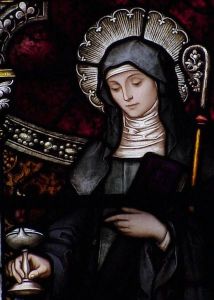 In their campaign to build up the saint while diminishing the god, hagiographers literally made shit up. Straight up inventions based on nothing but the imagination of the writer. They bullshitted their way through it. Sometimes a real figure could be used as a model, and then merged with the god they were trying to erase. But the lives were typically completely contrived, and all manner of miracles and benevolent acts were ascribed to the newly invented saint.
In their campaign to build up the saint while diminishing the god, hagiographers literally made shit up. Straight up inventions based on nothing but the imagination of the writer. They bullshitted their way through it. Sometimes a real figure could be used as a model, and then merged with the god they were trying to erase. But the lives were typically completely contrived, and all manner of miracles and benevolent acts were ascribed to the newly invented saint.
Therefore, it is my strong opinion that the Saint Nicolas theory is but more bunk that was put round by the Church to distract people from their traditional Christmas figures. Many local Yuletide characters were unsavory to the church. Italy’s Befana is a witch, and Germany’s Krampus is a creepy goat-man 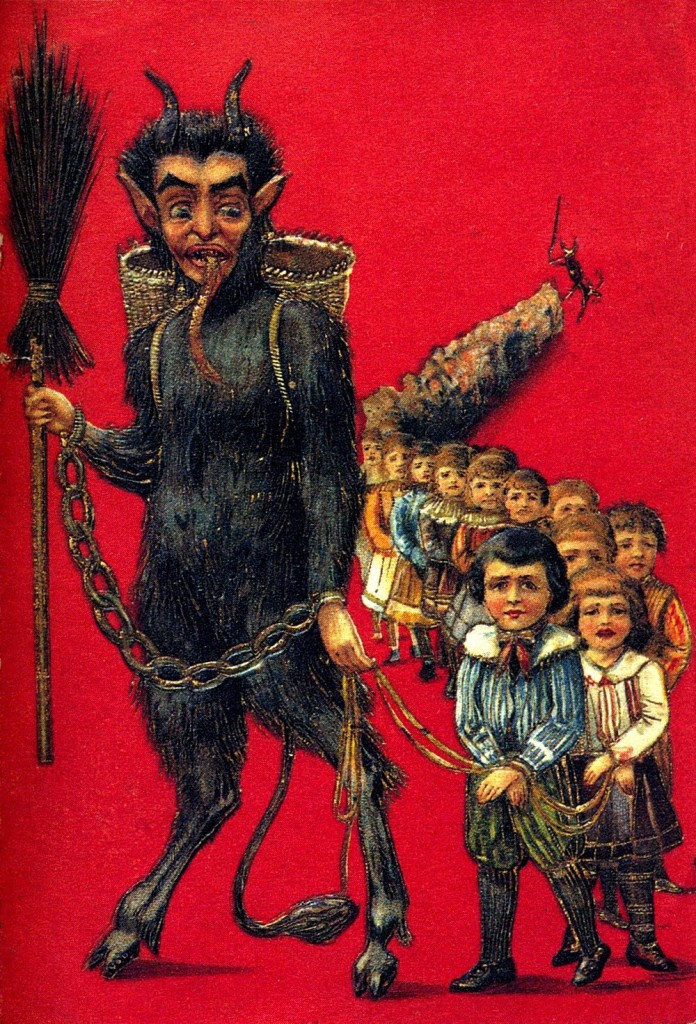
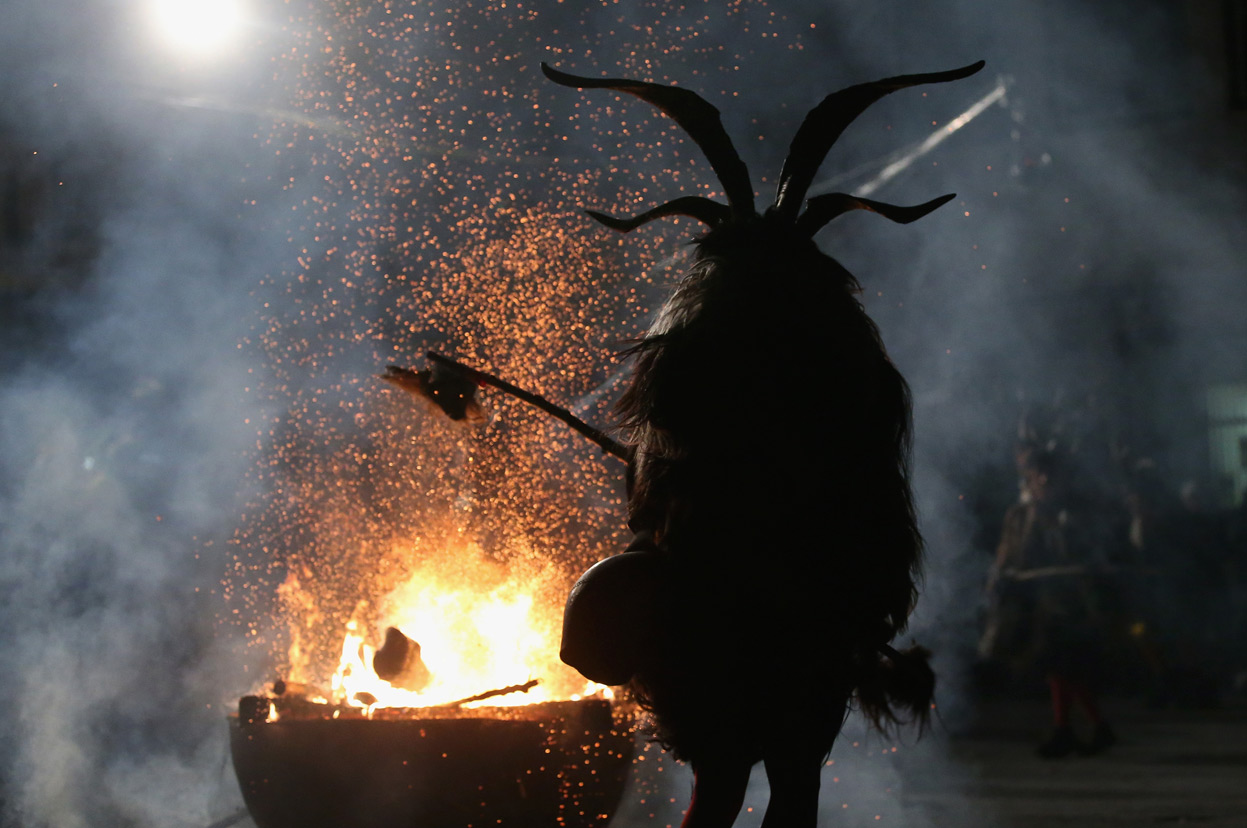
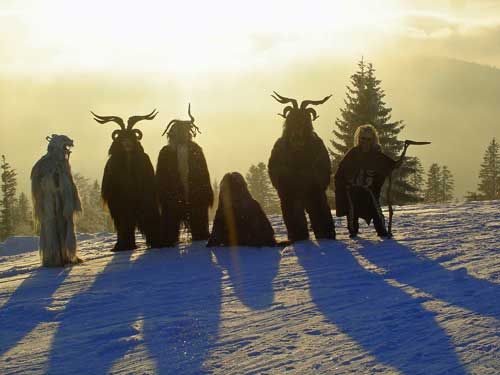

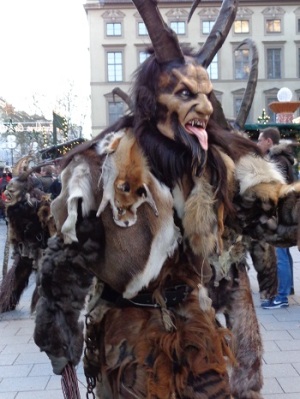
 with likely roots as a Pan-like agrarian deity, just to give two examples! There may well have been one or more real life men who the story of Saint Nick was based on. But, more than likely, the story was purposefully devised to replace and distract people from Odin and the other figures mentioned above.
with likely roots as a Pan-like agrarian deity, just to give two examples! There may well have been one or more real life men who the story of Saint Nick was based on. But, more than likely, the story was purposefully devised to replace and distract people from Odin and the other figures mentioned above.
In helping a friend find scholarly sources for Valentines Day, I was reminded that it was yet another holiday rooted in a pagan past; the old Roman Lupercalia. Saint Valentine was grafted on to the holiday in the SAME way as St. Brigid became the patron saint of Candlemas, which was formerly Goddess Brigid’s Imbolc.
Santa’s reindeer are not based on a horse. They are based on, erm, reindeer:
 Another point of contention is the assertion that Santa’s reindeer are based on Odin’s magical horse Sleipnir. As explained above, the bearded magic man flying through the air at Yule does have connections to Odin and his flying horse. However, the reindeer are more than likely inspired by the Saami reindeer herders.
Another point of contention is the assertion that Santa’s reindeer are based on Odin’s magical horse Sleipnir. As explained above, the bearded magic man flying through the air at Yule does have connections to Odin and his flying horse. However, the reindeer are more than likely inspired by the Saami reindeer herders.
Although the Saami are largely unknown by the general American public today, they were referenced quite often in writings of the 19th century when the American version of Christmas as we know it today was formed. Back then they were referred to as Lapps, and they were of great interest to folklorists and travel writers to whom “Lapland” was an exotic and fascinating foreign location.
Reindeer herding has been a traditional livelihood of the Saami for hundreds, if not thousands, of years. The Saami live at the tippy top of Scandinavia reaching from Norway and Sweden to Finland and over to Russia. Most of this area is considered Arctic, and it is virtually undeniable that the Saami in Lapland (Sapmi is the politically correct term for this region today) were a huge influence on our image of “The North Pole.”
The Saami tie to Santa’s reindeer goes beyond simply the coincidence of them being affiliated with reindeer in the North Pole. As mentioned above, Saami shaman used the fly agaric mushroom to spirit travel. Well, as we would have it, the Saami reindeer herders did as well. According to folklore and historical sources, the Saami herders would watch when their reindeer rooted out the mushrooms from beneath the snow. After the reindeer ate the shrooms, the herders would collect their urine and drink it to “fly” themselves. And there you have it: flying reindeer. This is pretty straightforward and difficult to debate. Sorry, Sleipnir! Not that I don’t love you and your eight legs or anything, but I’m not going to make up a tenuous connection just to pander to what people want to read! Especially when the truth is equally cool! If you don’t believe me, maybe BBC can explain it to you:
Fly agaric was a super uber common motif in German, Norse, and Finnish Christmas, which in all likelihood is a hold over from old Yule All you have to do is Google it and you will find numerous images like the one below which clearly demonstrate how Santa got his red and white suit (Sorry, Odin! No rags for Santa!):
** Quick edit with massive EYE ROLL and condescending sigh. Yes, Coca-Cola made today’s image of Santa famous. Duh. We all know that. But this article is more about addressing the information given by the other article referenced at the top than an exhaustive meticulous history of American Christmas. However to address some comments made on Facebook… ahem, do you think the artists working for Coke lived in a vacuum? Obviously they lived in the same culture as everyone else and were exposed to the same culturally pervasive motifs and imagery that were common to the time. As I said above, the fly agaric mushroom was a popular Christmas symbol and that pre-dated modern images of Santa. Coke’s artists, just like everyone else at the time would have seen these everywhere. So when they were choosing colors for his outfit, there could be little question as to whether these images played a large role in their inspiration.**
Christmas Caroling began in Pagan Europe, not in the Christian 15th Century:
One last thing to mention. The article mentions Christmas “songs” going back to the 4th century in a Christian context, and that carols originated in the 15th century. Again, no blame on the author as this information is very hidden and not well known. But Christmas caroling is a VERY pagan tradition! It is yet another indigenous European pre-Christian custom that the Church literally rallied and launched campaigns against. They finally decided to try to wipe out the pagan custom by replacing it with a Christian one, the same tactic mentioned above with the saints. Please read this article which explains it in detail: The Hidden History of Christmas Carols.
And there we have it. ~ Aelfie
Please check out our section for Pagan roots of modern holidays in our shop. I will be developing and adding more great resources and recommendations to it 
